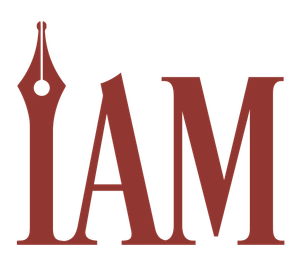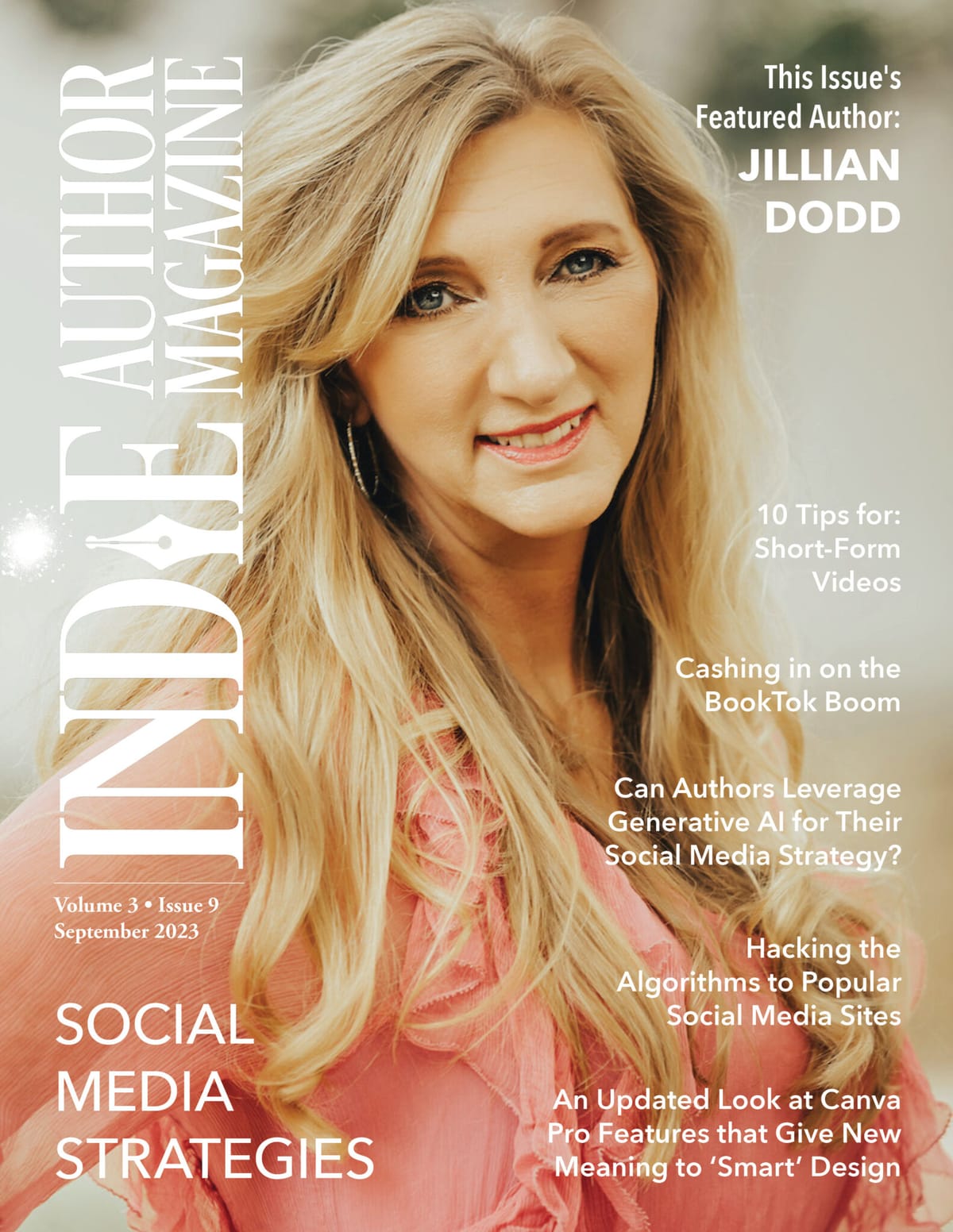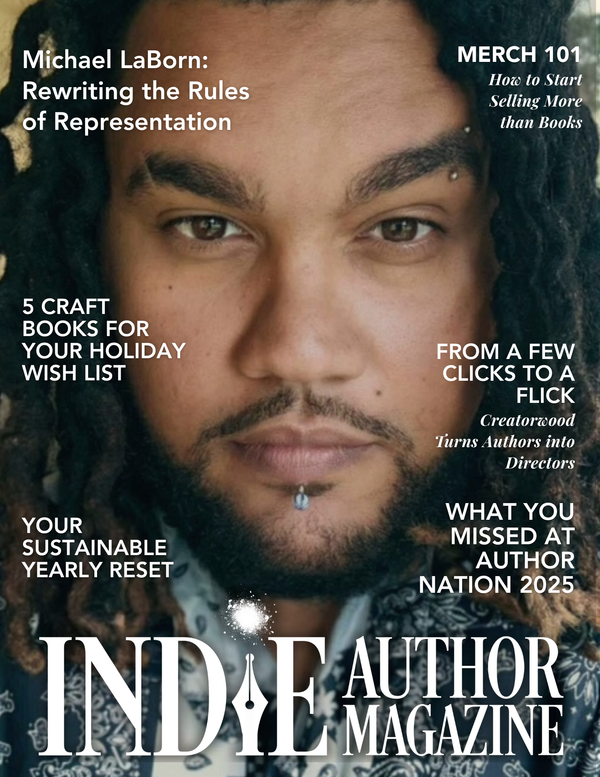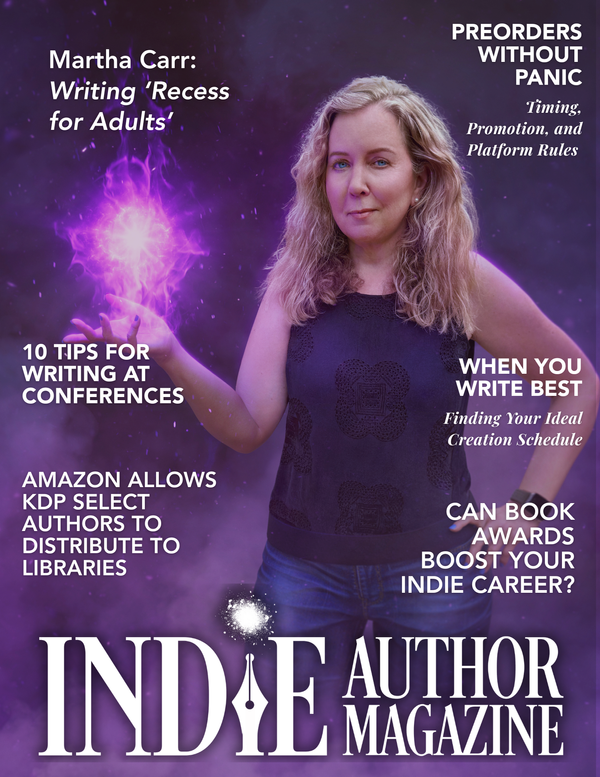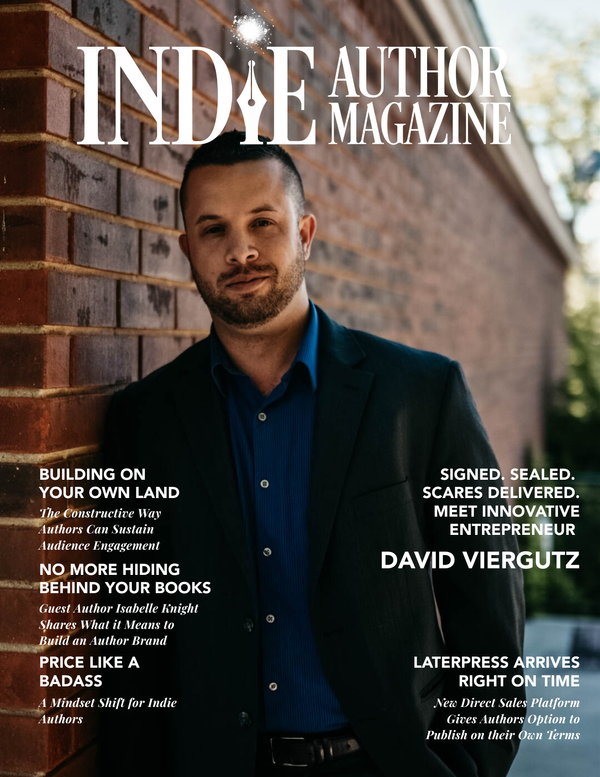Partner Spotlight
|
|
Future of Publishing: Indie Authors and the Creator Economy
Michael Evans’s Creator Economy for Authors delves into the significant shifts occurring in the publishing world. Highlighting the movement from traditional platforms to communities spearheaded by authors, the book explores the potential of limitless creation and its implications. Drawing from Evan’s experiences as a novelist and co-founder of a publishing platform, the work underscores the importance of diversifying revenue sources and adapting to new reader engagement methods. Esteemed authors like J. Thorn and Monica Leonelle recommend it as a thoughtful exploration of the challenges and opportunities facing modern writers.
https://books2read.com/u/mvBWql
Subscriptions for Authors podcast
Emilia Rose and Michael Evans
A weekly show to help you make more money from subscriptions as an author. From the creators’ website: “Our goal is to help more authors write full-time and build sustainable, recurring revenue from their superfans.
“Our co-hosts, Emilia Rose and Michael Evans, interview authors pioneering new ways to monetize their fiction and build reader communities. We share novel marketing ideas, new platforms/technologies, and game-changing strategies at the cutting edge of publishing.”
https://subscriptionsforauthors.com/podcasthome
Ream
Ream is a multifaceted subscription platform tailored for authors. Envisioned as an amalgamation of an eReader app, a reader community, and a mailing list, Ream streamlines the process of establishing a paid membership base for readers. Key features include:
Social E-Reader: Enables readers to engage in discussions, complemented by an auto-bookmarking system and customizable reader settings.
Import Entire Books: Designed to simplify the manuscript upload process, authors can swiftly transfer their entire collection of works onto the platform.
Scheduling Chapters: Authors can serialize a complete book, bypassing the need for individual chapter uploads.
Rooted in the ethos that authors possess more influence than traditional publishers and retailers, Ream champions the rights of storytellers. It guarantees authors comprehensive control over their content, pricing, and narrative ownership. Moreover, it ensures they maintain direct relationships with their readers. Joining Ream is cost-free, with the platform charging 10 percent plus payment processing fees on the author-generated revenue.
https://reamstories.com
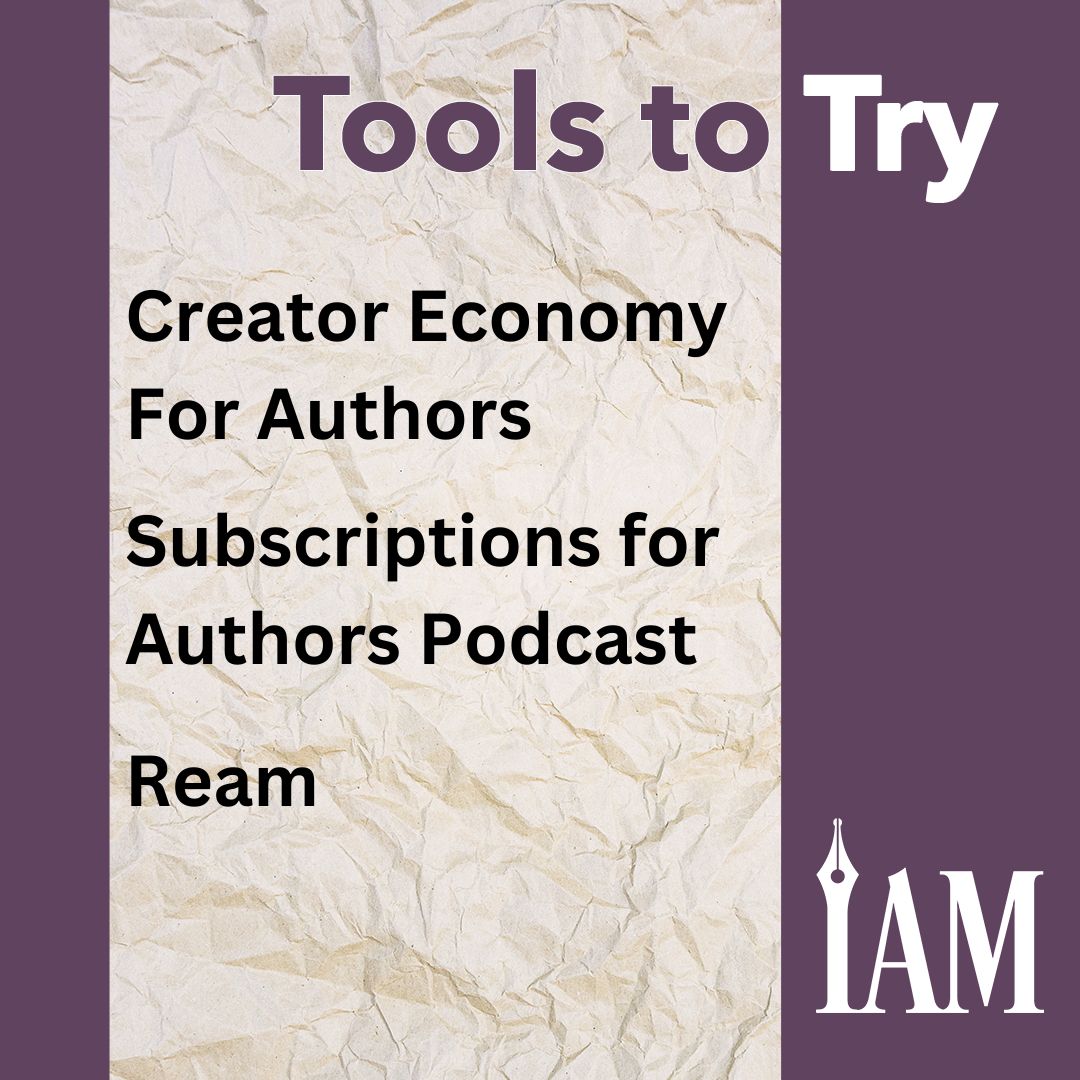
Social Media Tips for Indie Authors
Dear Indie Annie,
I can’t seem to figure out a social media strategy that works! I never know what to post, and I have to manage accounts for two pen names, so it feels like a lot to balance. Any advice for tapping into that “influencer” mindset?
Struggling with Socials
Dear Struggling,
My dear, social media “influencing” is supposed to feel fun and creative, not like another chore on your never-ending to-do list! With the right attitude and some tips from yours truly, you can turn your socials into successful, enjoyable self-promotion.
First off, lose the “influencer” title. You're an author with valuable stories to share, not an Insta star! Remind yourself why you write: to entertain others, spread wisdom, or simply create something beautiful. Apply those principles to your social media posts. When you're connected to your purpose, your content flows from an authentic place.
Avoid perfection paralysis. Stop stressing over the “right” post and embrace the imperfect, scrappy goodness of your first-draft social content! Your followers want to connect with the real you, not a curated persona. So share writing fails alongside wins, show your process—warts and all—and use plenty of humor.
(By the way, my sweet, do you know who coined the phrase “warts and all”? It was Oliver Cromwell, an English parliamentarian, who took on the king—Charles I, to be exact—and chopped off his head! I digress, but did that fact make this letter that bit more interesting? I can hear you scream yes. My point is made.)
Aim for interesting, not achieving. Rather than metrics like follower count or engagement rate, focus your energy on creating interesting things worth sharing, whether that's stand-alone gems of writing wisdom or intriguing plot teasers for your work-in-progress. Quality over quantity will always attract the right readers for you.
Next, think thematically instead of daily. Rather than individual unrelated posts, visualize a broader social media “storyline” for each of your pen names, aligned with your books’ motifs and genres. Then create content clusters around those higher-level themes at a pace that works for you.
You can post related groups of images, quotes, tips, and behind-the-scenes insights whenever inspiration strikes, but why don’t you bank all those ideas and schedule them out at regular intervals? There are loads of apps that allow you to write multiple social posts at once, then plan them for optimal days and times. Spend an hour cranking out content, then get back to your writing!
Most importantly, set boundaries. If social media becomes more of a burden than a blessing, scale back or take a break. Remember: You're an author first; all this “influencing” should ultimately serve and support your craft.
So shake off those struggles, dust off that creative spirit, and get back to sharing your story—in real, relatable bursts that feed rather than exhaust your soul. When your content flows from a place of shared humanity, connection, and joy instead of FOMO, you'll transform those struggling socials into a source of community and inspiration for both you and your readers.
Happy writing,
Indie Annie
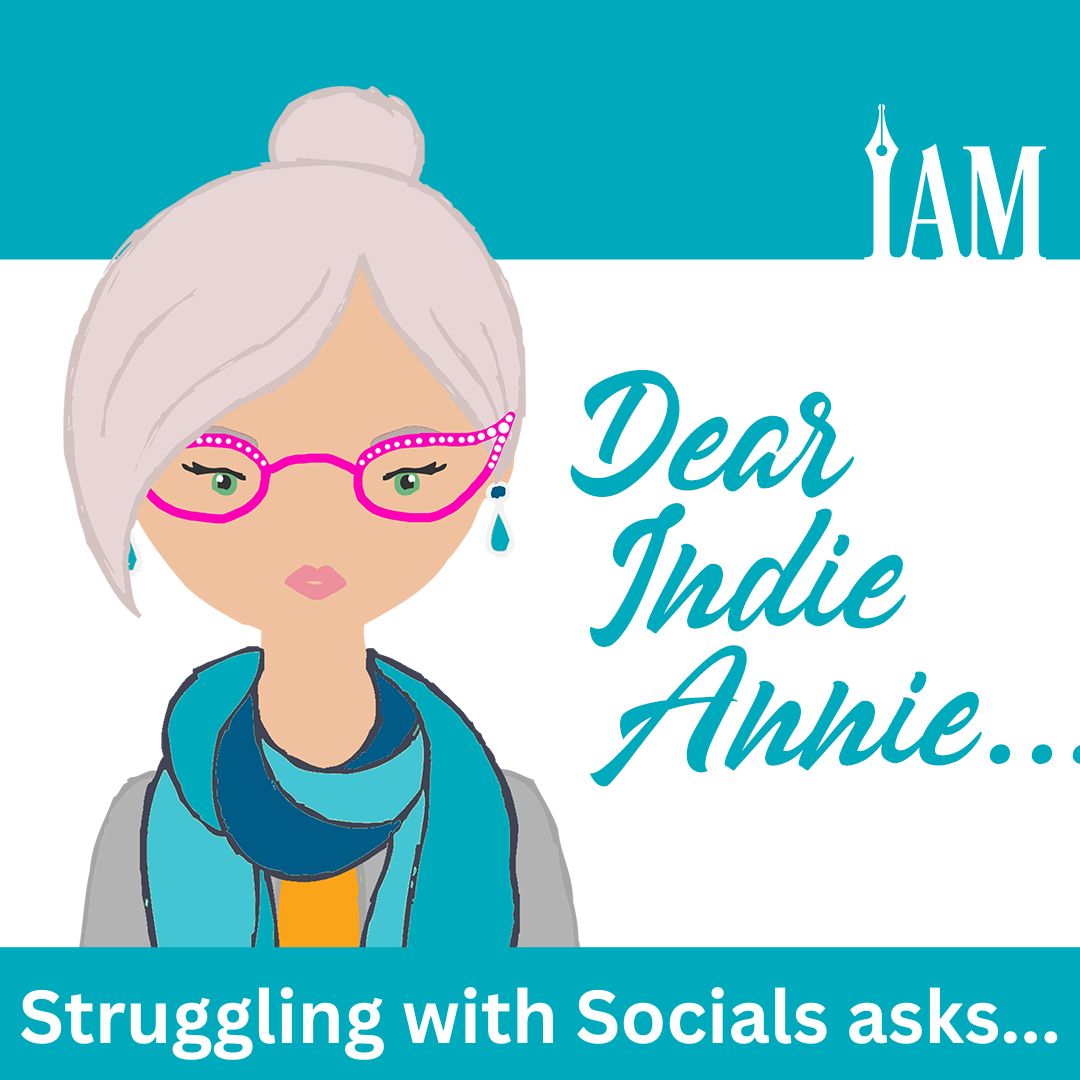
"Indie Authors Boost Business at RWAus 2023 Conference"
In the ever-evolving world of literature, the Romance genre stands as a juggernaut, captivating readers with tales of love, passion, and connection. The 2023 Romance Writers of Australia (RWAus) annual conference marked a pivotal moment in the association’s thirty-two-year history, ushering in a new era of growth and collaboration. With sponsors like Harlequin, Draft2Digital (D2D), Kobo, Simon & Schuster, and Penguin Random House, this year’s conference theme, “All That Glitters,” was a celebration of Romance's enduring popularity and its steadfast position at the forefront of the literary landscape.
Romance, in its various forms, including the iconic Harlequin, Mills & Boon, and Hallmark, remains not only the highest selling genre in the book world but also garners some of the most ridicule, a notion that many conference speakers commented on frequently. This irony is puzzling, given that love and romance are undeniably the driving forces that make the world go round. The annual RWAus conference showcased the importance of the genre and provided a platform for authors, both traditional and independent, to explore new horizons, network with peers, and connect with major publishers and agents.
For indie authors, the conference offered an unprecedented opportunity to thrive. RWAus President Louisa West, a successful indie author with over twenty books under her belt, exemplified the potential of the indie route.
“We want to make sure that indie authors are getting their craft and business needs met alongside the traditionally published authors,” West says. “Our ongoing partnership with Draft2Digital (D2D) and the range of indie speakers is evidence of our commitment. … Having publishing houses and international agents present their insights into publishing trends certainly helps me ensure my stories resonate with readers.”
The three-day conference kicked off Friday, August 11, with keynote speaker Steffanie Holmes. The bestselling indie author and publishing coach shared her journey from traditional publishing to becoming a champion of indie authorship. Her transition to indie came after a traditional deal fell apart because of editorial changes. Holmes explains that the emergence of Kindle and the growing buzz around indie publishing led her to explore this path with remarkable success.
Indie author and publishing coach Steffanie Holmes gives the keynote address at the 2023 RWAus conference Friday, August 11.
“I started going to the Romance Writers of New Zealand conference well before I even published in Romance,” Holmes says. “It gave me the opportunity to learn about this incredible industry where women were at the top, calling the shots. It blew my mind in the best possible way and helped me see that having this as a career was possible.
“Romance, as a genre, embraced indie before anyone else, and now we are at the forefront of the industry,” she continues. “Indie has taken over and changed this industry forever. Whether you are trad or indie, you need to know what’s going on, and conferences like the RWAus are the best place for it.”
The conference's impact extended beyond writing and publishing advice; it reaffirmed the significance of community and connection. Heidi Wessman Kneale, who took a five-week sabbatical to focus on her passion project of an audiobook, found the experience life-altering. This respite not only allowed her to enhance her storytelling with audio effects but also inspired her to prioritize her writing career over a mundane day job. The conference provided Kneale with valuable insights into the industry, reinforcing her commitment to her craft.
Dan Wood, the COO of D2D and a long-standing sponsor and speaker, emphasized the transformative power of RWAus conferences. “Our attendance at the RWAus conference has not only facilitated connections between authors but also bridged the gap between Australian authors and the global market.” Wood's involvement showcased the turning tide, where authors are realizing their options and making informed decisions that prioritize their creative journeys.
From left, Draft2Digital COO Dan Wood and RWAus President Louisa West.
“It’s well worth the trip for any US-based writers because Aussie readers love Romance,” he says. “Come and get to know the people and the market. Plus, Australia has the best coffee outside of Italy!”
The Power of Connection
Besides the thriving indie presence, the conference continued to embrace traditional authors, fostering a collegial atmosphere that transcended the traditional vs. indie divide. First-time attendees, or newbies, connected prior to the conference through a Facebook group and had dedicated Newbie Coordinators and events to help them overcome any anxieties that may have had about attending such a big event. It also set the intention that all authors are welcome. This was reflected across the conference program with a range of craft and business sessions that catered specifically to indie, traditional, hybrid, or any other combination of publishing strategies.
Keighley Bradford, a published indie author, shared her enthusiasm for learning and upskilling. “This is my first RWAus conference, and I cannot believe how welcoming everyone has been,” Bradford said at the event. “The social events are brilliant, and it doesn’t matter what stage of your writing journey you are at; there really is something for everyone.”
From left, author and first-time attendee Keighley Bradford, author Tanya Nellestein, and RWAus president Louisa West at this year’s RWAus conference.
Becca Symes, a firm favorite in the RWAus community for her Write Better Faster Academy and annual workshops and keynotes, lauded the conference's unique collegiality that fosters a sense of belonging for writers, which she says is often missing in other spaces within the industry. Her advice to indie writers on attending the conference echoed the sentiment of pushing boundaries and embracing discomfort.
“The Australian Romance community's support is invaluable and provides a source of acceptance that many writers crave,” Symes says. “It’s a fourteen-hour trip from the US but so worth it. I come for the workshops and the people, and also the coffee.”
Highlights from 2023’s Event
The conference program offered a mix of business, writing craft for aspiring authors and for emerging and established authors, industry research and insights, panel conversations, interviews, and roundtables. Everything from writer burnout to writing about animals to leveling up your TikTok game was on offer. Pitching and business appointments were available for all delegates, and of course, there was an array of social events, such as the annual cocktail party and gala awards dinner.
Rachel Bailey was made an honorary lifetime member of the RWAus at the gala awards dinner and recognized the dedication and volunteer hours required to maintain the organization. “I’m fully aware of how many volunteer hours it takes to keep our organization running and growing from strength to strength. With sponsors like Harlequin and Penguin Random House, the conference’s stature speaks volumes about its impact on the industry,” she said.
The 2023 RWAus conference’s cocktail party.
RWAus Diversity, Equity, and Inclusion Manager Jack Bridges has helped infuse RWAus and the conference with a significant and long-awaited cultural shift. “A lot of people wanted to see their own community represented, and many more wanted to be allies. Taking a leadership role in this space can be confronting, but for me—having transitioned later in life and being without passing privilege—the social cost of being the Diversity Chair is not significant.” The annual LGBTQIA+ and Allies Networking Session was incredibly well attended, as were the numerous diversity workshops across the conference weekend.
Stefanie London gave the closing keynote and hailed RWAus as an unparalleled writing and Romance community. “There will be highs and there will be lows in your career, but this community will support you through all of it,” London said. “Black moments and happily ever afters aren’t just for our characters.”
The 2023 RWAus conference reaffirmed the genre’s undeniable power, proving that Romance is more than just a literary niche; it’s a dynamic force that continues to captivate hearts and minds across the globe. With every session, keynote, and connection made, the conference heralded a new chapter in the RWAus’s history while embracing the timeless essence of love that fuels the genre’s eternal appeal.
And 2024 is shaping up to be another cracker of a conference. Taking place in Adelaide, South Australia, with the theme “Trope Actually,” the event will be held August 16–18. Headline speakers will include Christina Lauren, Elana Johnson, Cathay Yardley, and BJ Daniels. The event will also celebrate fifty years of British publishing imprint Mills & Boon.
Tickets are available to purchase now at http://romancewritersconference.com.au/2024, and you can even pitch a workshop presentation, as the final program will be announced in January 2024. “We are committed to bringing a really curated, quality program with so many more exciting announcements yet to come,” West says.
The 2024 conference will include pitching and business appointments, author signings, a themed cocktail party, a gala awards dinner, keynote sessions, and concurrent workshops.
In a rapidly evolving industry, the RWAus conference plays a key role in shaping trends and fostering a nurturing environment for many. As the publishing landscape shifts, the event serves as a beacon of inspiration, guiding authors toward paths that resonate with their creative ambitions. It celebrates both the enduring magic of Romance and the indomitable spirit of the writers who bring these stories to life.

Master Short-Form Videos for Indie Author Marketing
Visual storytelling is arguably the most powerful medium used by creators on social media today. It has gained immense popularity in recent years due to its opportunities for enhanced engagement, audience building, brand building, and content versatility, and nearly every social media platform has taken advantage. YouTube Shorts, Facebook and Instagram Reels, and TikTok videos are dedicated to short-form videos that cater to their audience's preferences for quick, visually compelling content.
Creators can experience these benefits by adding intriguing short-form videos to their content strategy. Carefully crafted videos generate additional interest in your book and brand by quickly grabbing your followers’ attention and introducing you to potential readers.
What Are Short-Form Videos?
Short-form videos are brief and simple content ranging from a few seconds to a couple of minutes long. On average, videos between fifteen and thirty seconds are most successful in delivering your message. A quick and engaging vehicle for communicating ideas, stories, and entertainment, short-form videos are a free promotion tool for online presence enhancement. Independent authors often use social media Stories, Reels, and Shorts to share snippets and quotes from their books, read their favorite excerpts, or offer behind-the-scenes glimpses into their writing process.
Read on for ten tips for making short-form videos work for you.
Plan ahead by canvassing content.
Scrolling through your preferred social media platforms can be time well spent. You can use the search feature to find audio and visual content featuring the particular details or theme you’re looking for. Once you identify interesting Shorts or Reels with high engagement, you can save the audio files and templates under a labeled category or collection for later use. On Facebook and Instagram Reels, click on the music icon on the video’s bottom right corner to locate the audio source and save it. You also have the option of using the platforms’ built-in video templates. These templates offer a guideline for the length of each video clip to get the same effect without the need for extensive video editing knowledge.
Record long-form content.
The benefits of posting long-form videos are audience relationship and loyalty building, higher conversion rates, and valuable core content that yields a higher satisfaction rate. Long-form content, such as podcast interviews and videos, is a great launching pad for harvesting ideas that can also be converted into short-form content.
Pro Tip: Long-form content is shot using a horizontal orientation, and short-form uses vertical. Zoom out when recording long-form content to allow room for cropping the video while editing. This also leaves space for adding a logo, text overlay, and captions on short-form content.
Create a plan for repurposing your content.
Your existing long-form content is an ideal canvas for creating a batch of videos under sixty seconds. Sharing interview excerpts and key points from your book can create compelling visual stories. This time-saver is great for when you’re in a time crunch or creative slump. “Repurposing down,” a term used by digital marketing strategist Latasha James, involves breaking down your pillar concepts from longer content into smaller pieces to eliminate overwhelm surrounding content strategy. This is great for introducing your brand to your audience and sparking interest on a wider scale.
Schedule recording and editing time.
Posting consistency helps build an audience and viewer anticipation for your content. To maintain a reliable social media presence, establish a consistent content creation and editing schedule. Once you decide on a daily, biweekly, or weekly posting frequency, you can schedule your content production and editing time. While short-form videos are typically spontaneous, planning and scripting can also help ensure your message is clear and concise. Outline the key points you want to cover, and practice delivering them naturally to make your videos more engaging and professional.
Pro Tip: It’s helpful to record themed content in batches, then schedule time for editing shortly afterward. You can release the videos as a series to build engagement. Depending on your posting schedule, you can release each video consecutively as part of your series.
Use simple video editing software for branding features and a professional touch.
Producing eye-catching short-form videos doesn't require complex production and editing skills, but it’s important to put effort into creating active videos that exercise your viewers’ eyes and keep them intrigued. User-friendly editing apps such as iMovie, Adobe Premiere Rush, and InShot can trim footage, add captions and text overlays, insert transitions, and incorporate music and sound effects. Most social media platforms also feature in-app video editing options that can help you produce quality content consistently. Use Canva to add customized branded messaging at the end of your video and drive traffic to your website or social media account.
Pro Tip: While you don't need high-end equipment, ensure your videos have good audio and visual quality. If your budget allows, consider investing in a microphone for clear audio and lighting equipment for good visibility for a professional-looking video that enhances credibility and captures attention.
Use captions for wider reach.
Many viewers surf social media while doing other tasks and may not be able to use sound. In these instances, they rely on captions and text overlays to engage with your content. Others prefer to use captions while interacting with content for enhanced comprehension and to remain engaged. Using these features helps effectively convey your message to a wider audience and ensures your content is accessible, consumable, and understood.
Experiment with trends to discover what’s working well for others.
It may be in your best interest to stay up to date with popular audio clips, trends, and viral challenges. This helps create fresh and relevant content for your audience. It’s common for social media users to explore several videos using a theme or audio clip they find interesting. So creating trendy short-form videos helps provide opportunities to tap into a wider audience, boost visibility, and increase your chances of connecting with your target readers.Pro Tip: Consider collaborating with authors and members of similar industries to create videos that entertain and inform your audience. Fellow authors, influencers, and experts in related fields are all great resources for collaboration who will attract new followers by allowing you to tap into your partner’s audience. Hosting lives together or collaborating on Reels adds variety to your feed and expands your network in the writing community.
Cross-post your content.
Posting videos across social media platforms can help you reach a wider audience and leverage your existing audience on one platform to drive traffic and engagement on another. This helps you build a strong online presence across multiple platforms. Before cross-posting, be mindful that each platform has unique features and audience preferences, so be sure to evaluate how you can adapt your content for the overall best fit. This may include resizing videos or images for varying display formats and aspect ratios, reformatting captions, or making adjustments for character limitations. Some platforms may restrict or limit views of your content if there is a watermark from another platform displayed. To be safe, be sure to remove any watermarks before posting—a quick Google search will lead you to several programs that can do the trick. This attention to detail enhances the viewing experience and makes your content more professional and visually appealing.Pro Tip: Online graphic design tools like Canva make it simple to resize images to fit Instagram's square format or edit videos for TikTok's vertical orientation, though you must have the paid version of Canva to resize images.
Analyze your results and test for success.
It’s important to regularly analyze the performance of your short-form videos to ensure you’re maximizing your reach. Familiarize yourself with the engagement metrics, views, comments, and shares of your content. Once you identify successful patterns and trends, you’ll understand which content resonates most with your primary audience. This feedback is valuable for guiding your video creation content and establishing future content strategies.Pro Tip: Business Growth consultant Alex Hormozi suggests testing all content on TikTok and X, formerly known as Twitter, because each platform judges content engagement independently. This means that each post on these platforms is immediately shared with the user’s audience as opposed to on other platforms, where algorithms analyze the performance of a user’s previous posts before showing new content to their followers. Hormozi then suggests only posting the content that yielded high engagement on TikTok and X to Instagram and YouTube, which judge content based on overall watch time before making your content available to viewers.
Create “sticky” content that prioritizes your value add.
Short-form videos are best at informing and entertaining viewers. Whether your goal is to engage or convert your audience, hold their attention by providing catchy content that entices them to learn more about you. The first few seconds of your video are prime real estate, so start them off with an intriguing scene, question, or hook to entice viewers to keep watching. As an author, storytelling is your forte. So utilize your storytelling skills to create captivating short-form videos. Share brief stories related to your writing, books, or creative journey. You can also try sharing a quick tutorial, briefly expressing your perspective on a topic, theme, or event that you're knowledgeable or passionate about, or create a listicle for quick consumption. As long as you show up in a way that adds value, odds are you’ll attract those who are interested in learning more about you. Include clear calls-to-action to prompt engagement by asking questions, encouraging comments, or directing them to your website or book listing. This helps viewers feel like they’re a part of your community. By providing rich content, you can establish yourself as an authority and build on the trust you’ve developed with your audience.
Remember to be authentic, experiment, embrace creativity, and have fun. Short-form videos can easily help you showcase your unique writing style while introducing your author brand to a new audience and, hopefully, new readers.
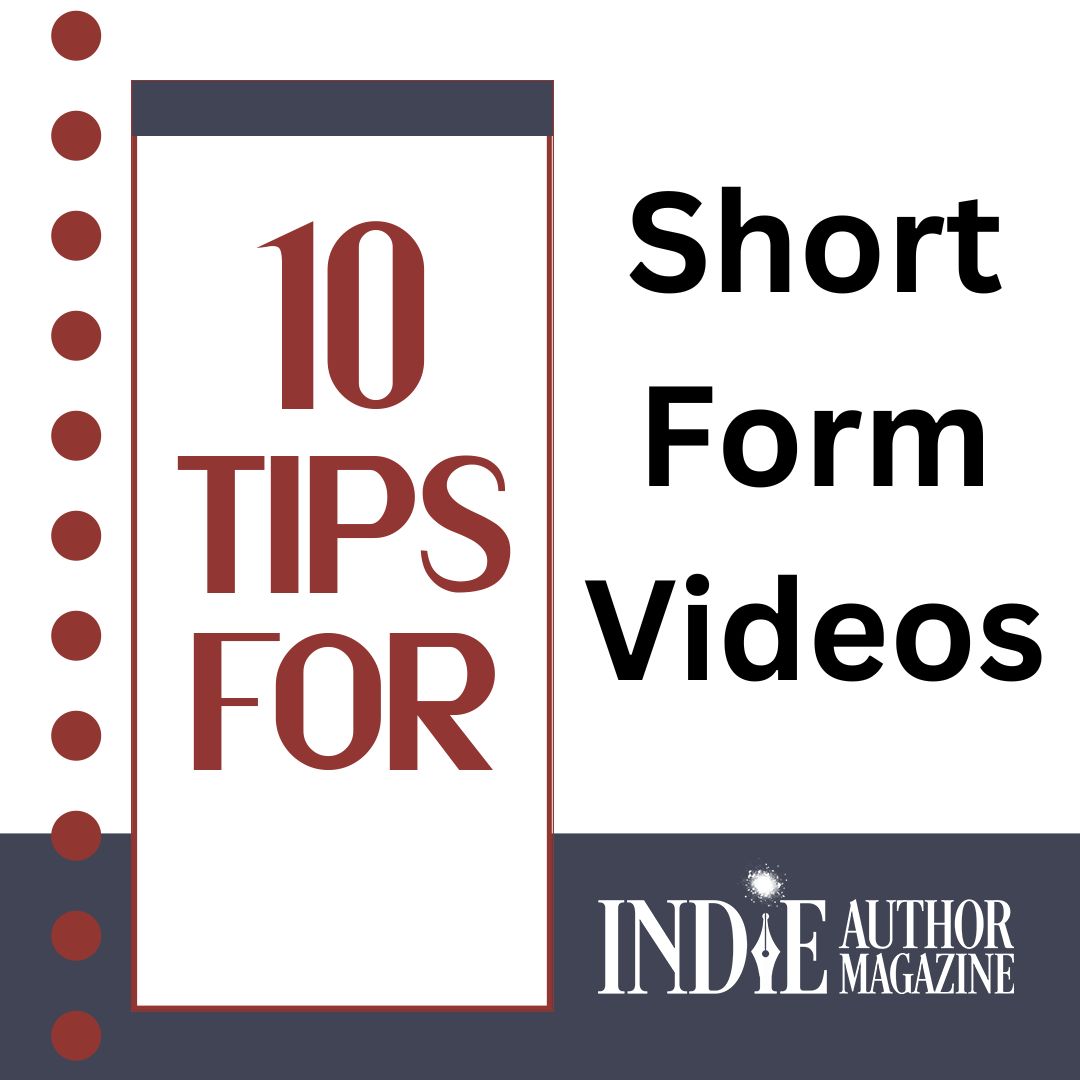
Social Media Algorithms: A Guide for Indie Authors
What Indie Authors Should Know to Ensure Their Posts Are Seen
Until the late twentieth century, town criers were used to spread the word about local happenings. They stood in front of crowds, disseminating crucial information. Each author must now take up that role, but luckily, thanks to the internet, we don’t have to yell, and the effectiveness of our efforts is greater.
Today, programs like Facebook, X, Instagram, and TikTok act as the digital town square where you can scream about your newest release. But social media is a shifting landscape, and each program runs on carefully tuned algorithms that determine who sees your content. These platforms are also living programs, meaning they are always in a state of change—and keeping up with these changes can be cumbersome, especially when developers don’t always make the updates clear to users.
If you’re using social media for marketing your work or building your audience, it is necessary to understand how the algorithms influence the visibility of authors’ accounts and how to potentially track changes in these algorithms over time, as these developments will affect how you should approach using social media to see the most impact on your indie author business. We’ll cover the major players below.
What is an algorithm?
Without getting into the weeds, an algorithm is an automation that decides the placement of content on a social platform. It operates on signals, such as clicks, views, and other interactions with the application. Algorithms prioritize content that is engaging, meaning anything a user interacts with by clicking, viewing, liking, up-voting, or otherwise showing it has attracted their attention. Algorithms then determine how often to show similar content and to which people. No two users may see the same content in the same order, because each user, based on their profile and account “history,” is unique. Furthermore, each platform, and each algorithm powering that platform, is also unique. There isn’t a human operator making minute changes, watching your movements and content—it is automatic through the program.
Facebook
Owned by parent company Meta, Facebook is a robust, effective tool for connecting users based on interests (Groups), setting up a social front for your business (Pages), or running ads (Ads Manager). Facebook has changed over the years to keep up with short-form content of Instagram Reels and TikTok. Facebook prioritizes the content found in a user’s “feed” based on a few factors, including whether they are a friend or follower, which receive highest priority, and how engaging the content is to those who view it. Facebook also considers how relevant the content is and whether it’s “white noise,” spammy, or otherwise un-engaging. Authors should consider Facebook’s acknowledgment of a shift to video focus, especially as editing software becomes more intuitive and affordable, when deciding what type of media they should post.
Facebook posts platform information on its Business, Innovation and Technology page and even produces its own articles, including one on AI and the algorithm, published in the Meta Newsroom (https://about.fb.com/news). These are devoid of most of the techno babble and geared toward everyday users who are curious about developments.
Instagram
Instagram, another child of parent company Meta, is a platform most known for sharing pictures and videos. It functions on a similar algorithm as Facebook, and a lot of the information you need about it can be found in the same places.
Instagram is an amalgamation of algorithms and includes separate rules and priorities for the Instagram Feed, Stories, Explore Page, and Reels. The peeled-back version of each algorithm and how it determines how to display content is as follows:
Feed: This is determined by your activity in your Feed, such as likes, comments, shares, and saves.
Stories: Stories uses the Stories you’ve viewed or engaged with in the past to determine what content you’re likely to engage with most.
Explore Page: Similar to the Feed, this page tracks your activity in the Explore tab to determine your interest in content based on your engagement with it.
Reels: Likes, comments, shares, and saves are influential to the type of content you will see.
Additionally, some social media scheduling platforms such as Later and Hootsuite include tools within their platforms to track individual account campaign and posting effectiveness. They also post useful information, such as this deep dive into the Instagram algorithm (https://later.com/blog/how-instagram-algorithm-works). Please keep in mind it is up to you to decide the weight of the information provided, and that it may not all apply to your business.
TikTok
TikTok’s meteoric rise in popularity has changed the social media landscape in the past five years; today, it is the most popular smartphone app in the United States, according to Axios, and the third most popular social media network worldwide, behind only Facebook and Instagram, according to Insider Intelligence. TikTok is simple in conception and robust in functionality, acting as a video editor and social platform in one. TikTok’s For You Page also seems to be one of the most responsive, curating content for its users based on a few video views and likes and focusing heavily on trends in which videos follow a similar format and style.
TikTok allows for the creation and use of hashtags to organize videos, and the app analyzes these and other video information, including sounds, captions, and video effects, to suggest content for other users. TikTok itself provides in-app analytics and performance metrics; like Later and Hootsuite, there are also a host of services which offer more in-depth analytics and trend-tracking. Beyond the tools and articles, the most current information regarding the community guidelines on TikTok, such as the type of content allowed, can be found under the TikTok Community Guidelines Page.
X (formerly Twitter)
Home to 450 million active users per month, Twitter—renamed “X” by CEO Elon Musk in April—is a social platform that focuses on short-form text, though each post on the platform can contain text, video, images, or links. Like the other platforms mentioned, X’s algorithm compiles data from engagement, meaning shares, likes, and comments, to determine what type of content to boost.
Under new ownership as of October 2022, the platform has seen some of the most rapid user-affecting changes as of late, the news of which seems to be passed down through the app itself and notably from Musk’s own posts on the site. Typing “Twitter News” into a search bar yields little verified information, and following X’s algorithmic changes is easiest from the company’s official blog.
Asking for help
Navigating social media can be a challenge, as the software is always in a state of flux. Indie authors excel at maintaining malleability and adapting to change, and seeking out other users who are using these platforms with variable degrees of success can sometimes be the best option. Luckily, the platforms themselves often have one or more versions of a community by which to find answers to your burning questions. Use Groups within Facebook and Communities within Twitter to find people who can provide you with support. In Instagram and TikTok, you can expect to find answers in video or picture format, and those can be sorted by hashtag and keyword searches in the apps. Finally, do not be too timid to search the internet in pursuit of the most up-to-date information.
You don’t have to grasp the intricacies of each platform to do well within its ecosystem. Sometimes, trial-and-error is your best bet for spending your time and energy as a creator; then, double down on what works. Above all else, be sure to view social media from a macro perspective—otherwise, keeping up with the changes will become a full-time job itself.

Romance Author Success: Jillian Dodd's Journey
How Romance Author Jillian Dodd Makes Her Dreams Come True
The plot for Jillian Dodd’s first novel came to her in a dream. Well, in three dreams, actually. Over the course of a couple of weeks, the author dreamt of the characters at different periods of their lives. When she woke up, she needed to know the rest of their story, so she wrote it down. The resulting novel, That Boy, remains one of her most popular series eleven years later.
Jillian is now a USA Today and Amazon Top 10 bestselling author of over fifty titles who manages her own app through BookFunnel and sells direct via a Shopify storefront. Her eight series deliver easy-to-read Sweet Romance titles that push the boundaries of YA with big cliffhangers and lots of drama. Though many of the books are set in a world of celebrity and glamor, their young protagonists face relatable milestones like crushes and first kisses. Her Kitty Valentine Chick Lit series offers rom-com tropes for more mature readers.
When she had that first dream, Jillian was a stay-at-home mom with a background in retail and marketing. She started going to movies by herself once a week while her kids were at school and then blogging about the films. “I’d see a new release, and then I’d write a review of it. And the scoring was based on anywhere from happily ever after to the walk of shame,” she says. She posted her reviews on Twitter and started to find a community there.
At first, she published That Boy without any expectations. She didn’t even tell anyone about it. In the first three months, she sold thirty-six copies. Wondering what would happen if she actually tried to sell the book, Jillian contacted bloggers and posted about the book to her Twitter followers. Her blog expanded to a website and Facebook. Her sales went up to three hundred, then six hundred, then nine hundred. She says joining a community of writers and readers made the biggest difference.
Now she communicates with her readers across several social platforms, but she’s most active on her Patreon. She says she’s interacting there every day and has monthly Zoom calls with some of her Patreons. “It’s a lot of fun to talk about the stuff that you’re passionate about with people who care,” Jillian says.
Sweet Dreams
Jillian keeps her phone by her bed to get notes down as soon as she wakes up, but she says she doesn’t always need it. “I remember my dreams. I have a song that was sung in a dream by a character to his love, and I didn't know they were supposed to be together. I woke up trying to remember the song. We actually ended up recording the song for the series.”
Waking at 5 a.m., she lies in bed and types on her phone, mostly without looking at it. She says she makes fewer mistakes that way and actually types faster than she does on her computer. She likes the quiet and really embraced the early hours during the pandemic, when her husband and daughter were also working from home. Even now, her husband’s home office is close enough to hers that she sometimes overhears his conference calls. They’re both looking forward to his upcoming retirement.
Beyond starting work from her bedside, Jillian doesn’t stick to a routine. “I’m an Aquarius,” she says. “I don't do routine. I plot meticulously, but yet not. I always know the end of the book and the end of the series, but I don’t know how I’m going to get there.”
She uses Scrivener for both drafting and formatting, but she goes back and forth between two laptops and her phone, writing in her office or outside if the weather is nice. “I see my books like a movie in my head, and then it’s just a matter of trying to get that vision and everything that people are saying onto paper or on my computer screen.”
She says the first draft is usually pretty clean by this point in her career, but her daughter will give it a read-through before it goes out. She delivers the draft to Patreon and her editor simultaneously. Patrons get the unedited book chapter by chapter as she writes it, though she tries to keep four or five scenes ahead of them. The rough version of her newest release is also available on Kindle Vella, where she hopes to find new readers from the serial community. This early access serves a dual purpose in driving engagement with her readers and giving her feedback as they interact with the story.
She’s still dreaming about the characters in her novels—even the ones she’s already published. Over a recent holiday, Jillian’s family sat down to watch the Marvel Cinematic Universe films in chronological order. Afterward, they reorganized her books on a similar timeline. “I had a dream that this character from a different series is going to end up in the Eastbrook series, and I was like, ‘Wow, how did that happen?’ But the timeline still works out.” Today, she keeps a spreadsheet to help track the families and make sure that crossovers make sense. She has the suggested reading order published on her website, and readers will soon have access to an EPUB with clickable links to guide them through their choice of chronological or series order on her app.
Creating a Dream World
This past April, Jillian released the only author app available through BookFunnel. She had mentioned to BookFunnel founder Damon Courtney that she wanted to build an app for her brand and asked if his company had ever considered something like that for authors. He said it had been an early idea ten years ago, but he hadn’t seen much interest. She told him she was interested.
The Jillian Dodd app is beta testing with a built-in e-reader and audio player, and when readers purchase e-books and audiobooks from her store, they are automatically added to the app’s library and synced across devices.
Jillian doesn’t think an app will be the right project for every author, especially since readers can already filter their books by author in the original BookFunnel app. For her, the app is an extension of her online store and a way to help readers organize her extensive backlist. She hopes to eventually add a chat function, in-app purchases, and notifications to keep readers updated on sales and other news.
Meanwhile, she’s focusing on growing the direct sales side of her author business. Jillian started selling her books through vendor links on her blog in 2018. She recently polled her readers, asking what drew them to her traditional website. They told her they mostly went there “to find out what’s coming next, and see what books you have out, and number one was to buy books.”
With that in mind, she “picked and chose what would work well from more of a store standpoint. On my website I had all the lists of all the vendors they could buy from, which was great, but why not come to me? I’m very passionate about that,” she says. “I love that when I ship paperbacks out, I can put fun stuff in there—postcards and bookmarks and other fun stuff. We stock it all.”
So after twelve years of blogging, she closed her WordPress website and shifted everything to her Shopify storefront. “I had a glass of wine and toasted the end of my website,” she says.
Dream Team
Selling direct, managing inventory, updating social media, and keeping up with the app on top of writing the actual content for her books is a lot of work, but Jillian doesn’t do it alone. The success of her author business has allowed her to hire a team, including her son, daughter, and two friends, who all now support JillianDodd.net full time.
Jillian’s daughter has worked for the business since she was fifteen and now focuses on branding. The author hired her son away from a corporate job about a year and a half ago to do the store and advertising. Her friend Beth “was one of those first thirty-six people who read my book.” They messaged each other on Goodreads, and have been friends ever since. Now Beth handles a lot of the backend work. “My friend Mandy was one of the first people in my reader group, and she’s very social and did event planning. So she’s been doing [social media] full time for at least four years.”
The team has been taking classes like Pierre Jeanty’s 7 Figure Book Business and Steve Pieper’s AMMO to learn more about direct sales and author marketing techniques. She’s enjoyed figuring out everyone’s strengths and interests “to try and create dream jobs for all of us,” she says, “because I think if you’re doing your dream job, you’re happy and having fun.”
She also says she looks forward to making more professional connections at this year’s 20Books Vegas conference. “One of the things I did very early in my career was go to conferences and meet vendors and try to meet other authors. You have everybody from somebody who hasn’t published their first book to people who are making eight figures, and so it’s just really cool to see them all together, and I learn so much. You never know who you’re going to meet and how that relationship is going to go, and how it can affect your career and … [how] you can help each other.”
Dream Big
This year Jillian set a big goal for the team: to sell more in her own store than she does on Amazon. They’re about a third of the way there, spending about 90 percent of their ads budget on direct sales. Although she plans to continue selling her books in a wide release to meet readers where they are, she’s focusing her energy on making personal connections with readers through the app and her store. Jillian fulfills most of the orders that come through her store herself. “I want a place where readers can go where it’s just all me all the time. We’ve got instant messaging. I’m the one who answers it. I like having that direct contact,” she says.
For Jillian, maintaining those relationships with the people who love her work is what makes this business a dream come true.
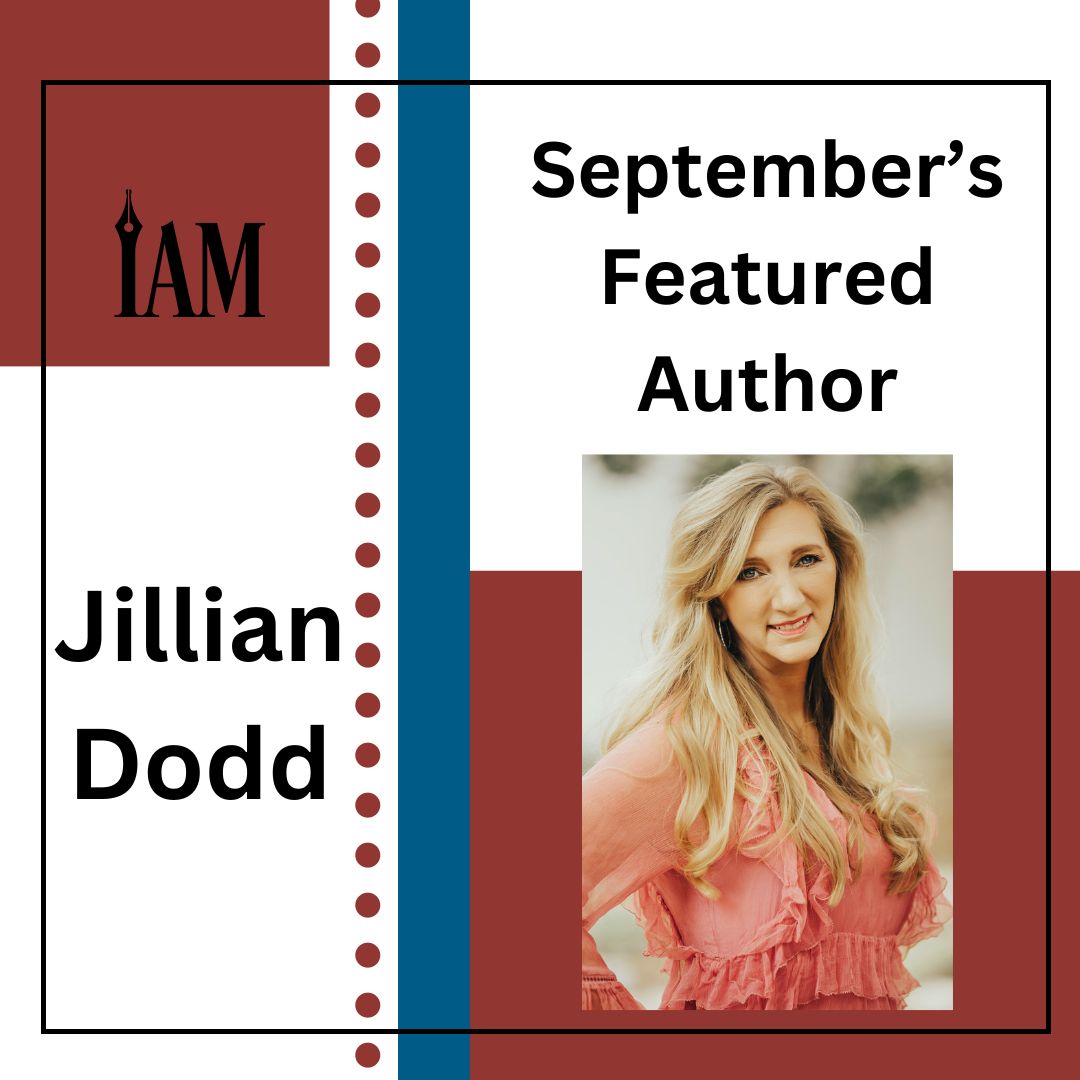
Starting Your Author Career Right
Remember how you went from grade school to middle school to high school and then to college? How you started a new job, then moved on to another new job? Starting over is a gift. It’s a new chance to do what you couldn’t before. Maybe you were a big fish, but it was a little pond.
Time to be a big fish in a big pond.
Your life has prepared you for a career as an author. In this new job, you’ll get to start anew once more. You’ll try to sell that book you’ve written.
You’ll wonder where to start. It all starts with one. Like everything else you’ve done in life, you make your first acquaintance at the new gig, then you figure things out. The good news is that there are resources to help you. You’ll never truly start at ground zero because the information you need is only a few clicks away, like reading this magazine. If you want to do it trial-and-error style, that’s up to you, but you should treat your baby with a little more respect. Then again, it’s your career, and you are responsible for the direction you take.
What are those first steps? Join a group of kind authors, and see what’s possible. Establish a social media presence where your target readership hangs out: young, old, cryptid, or whomever. You should know where they hang out because you’ve written a book for them. So join, and start the slow procession to being visible. If you shout, “Buy my book,” no one will hear you. If you talk about those things that the group loves, then at some point, potentially months down the road, you can add that you’ve written a book. Maybe ask a few of them to beta read it for you, even if it’s already published.
Earn your keep by doing favors for others. Then figure out how to market through sales and promotions, all while writing the next book.
As an experienced author, if you change genres, you’ll get to start over, too, but the journey will be nowhere near as trying. You’ll know what you did right the last time, and you’ll know what you did wrong. Practice more of the former, less of the latter, and you’ll keep moving forward.
It starts with a good story and one reader. That will open your world to being a professional author.
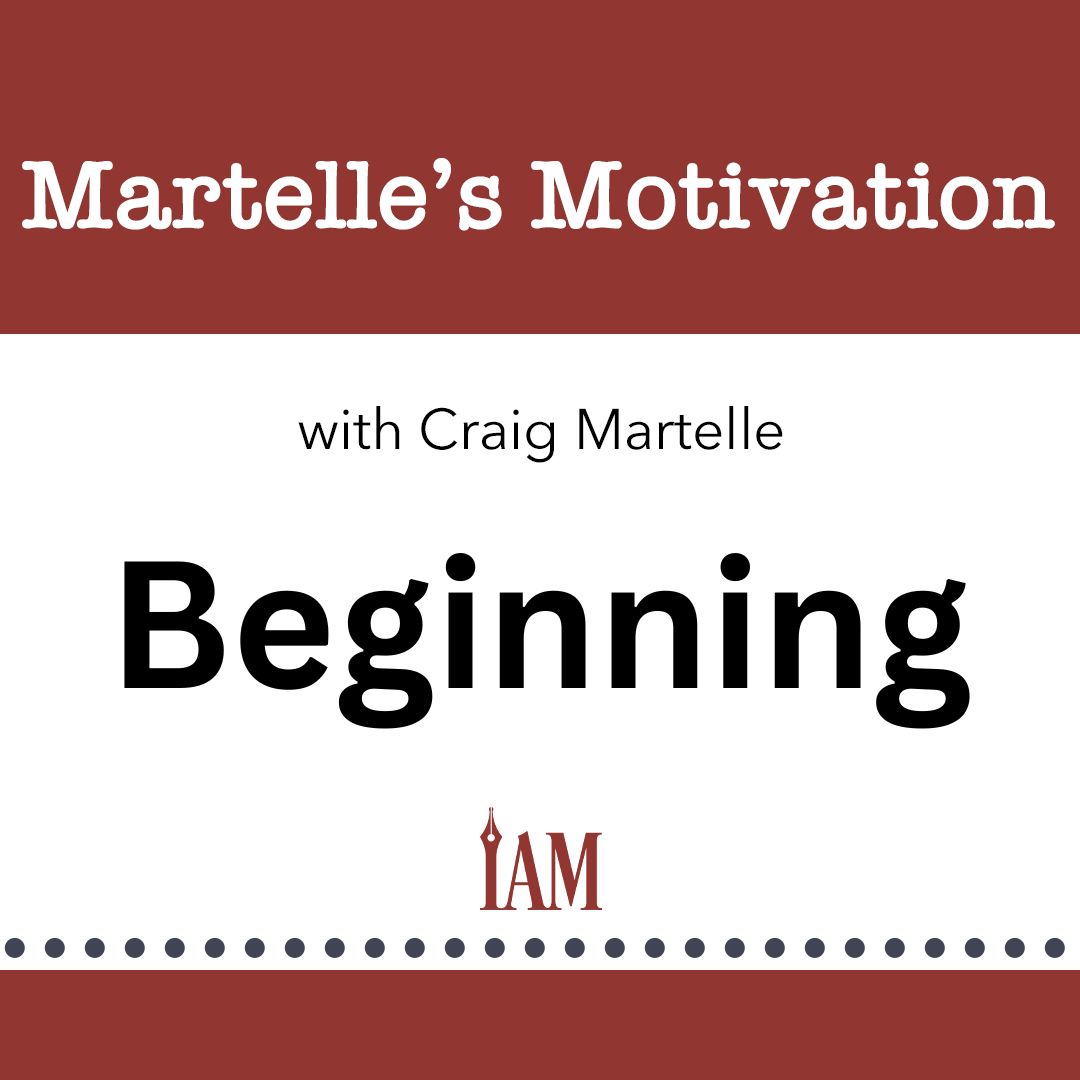
BookTok Marketing for Indie Authors
Authors Can Still Clock Huge Sales Thanks to TikTok’s Reader Community
In the past three years, TikTok, the wildly popular short-form video sharing platform, has become a powerful tool for authors to connect with bookish communities and establish their brand. Just as the platform itself has seen its popularity grow since the app became available for US users in 2018, the #BookTok tag, which came about nearly two years later amid pandemic lockdowns, has followed a similar upward trend. And neither shows any signs of slowing soon.
Indie Author Magazine has covered how authors can kick-start their TikTok success in a Ten Tips article (https://indieauthormagazine.com/ten-tips-for-tiktok/) written by Lasairiona McMaster, but for those still on the fence about using the platform, we’re exploring how TikTok can make a difference to those looking to grow their author brand.
How Important Is TikTok to Authors?
TikTok is arguably the most important promotional tool available to authors today.
According to an Exploding Topics article by Josh Howarth dated June 2, 2023, BookTok was TikTok’s number 2 ranked keyword, meaning that the keyword has had well over one hundred billion views.
And BookTok’s popularity among readers doesn’t just translate to more publicity. According to a Business Insider article dated May 18, 2023, “The BookTok phenomenon helped send book sales to an all-time high and reignite a love of reading.” And many authors’ individual sales numbers have proven it. Stone Maidens, a novel written by Lloyd Devereux Richards and originally published in 2012, sold more than one hundred thousand copies after Richards’s daughter’s TikTok about the book went viral earlier this year.
Says Lila DuBois, an award-winning author and TikTok expert, “TikTok is currently the biggest book platform, with Barnes & Noble even dedicating entire tables to BookTok-recommended books.” She compared these tables of books to the end caps dedicated to New York Times bestsellers. DuBois is a co-host of the TikTok module in the Self Publishing Formula’s Ads for Authors course alongside Jayne Rylon. “The app’s influence on book sales is significant, making it a crucial platform for authors to engage with readers.”
That said, a Publishers Weekly article dated August 18, 2023, indicates that, according to BookScan, “BookTok’s effect on sales is diminishing.” Sales for the 180 BookTok authors that BookScan follows dipped in July by about 4.5 percent compared with the prior year, the first time it has happened since 2019, according to the report. The trend matches numbers seen in the rest of the industry; according to Publishers Weekly, “Total adult fiction unit sales have fallen every week since late June and are now up only 1.4% through August 12,” and BookScan analyst Kristen McLean “explained that BookTok author sales couldn’t continue to increase at the rate they had when the platform started to become a major discovery engine in 2020.” According to McLean, consumers have been reading less since COVID-19 restrictions were lifted, which has contributed to the downturn, though she credits BookTok with being one of the industry’s most important platforms by which readers can discover new authors.
What Works, and What Doesn’t?
While Romance and Fantasy genres have seen a proliferation on TikTok, DuBois explains that BookTok represents a diverse range of genres, catering to readers of all preferences. TikTok's visual medium has also contributed to the resurgence of the print book market, as BookTok creators enjoy showcasing physical books and building collections. Some indie authors are now even making special edition books for BookTok readers. For example, a special edition of Fourth Wing by Rebecca Yarros includes foil on the hardcover, dragons stenciled on the edge, and a reverse dust jacket. The books sold out in record time, and forthcoming books won’t have the stenciling.
To ensure your content reaches your targeted TikTok or BookTok audience, DuBois emphasizes the importance of training your algorithm. This involves following book-related accounts, engaging with book videos, and aligning your content with BookTok customs, norms, and trends. DuBois recommends dedicating time to training your algorithm before jumping into content creation. Attending live author events and interacting with the audience is another way to grow your following.
TikTok offers two account choices, personal and business. The choice between the two accounts depends on the individual author’s needs and understanding of TikTok’s terms of service. Authors should review the updated (as of July 2023, at the time of this writing) terms of service in order to make an informed decision on which account would meet their needs.
But I Don’t Want to Be On Camera!
While TikTokers appear to prefer authenticity and off-the-cuff content, DuBois suggests that being on camera isn’t necessarily a requirement for popularity. Authors who are uncomfortable on camera can still create engaging content and inform their audience about their books through other creative means. However, TikTok has a bias toward content created within the app, rather than imported from other sources. For example, book trailers pulled from another platform that have the black strip across the top and bottom of the video typically don’t get a lot of traction. In fact, book trailers in general don’t have a wide reach. (This author learned that the hard way.) BookBrush has a TikTok template, but keep in mind DuBois’s warning about TikTok’s bias.
Although not as popular as they once were, authors still use page-flip videos when they don’t want to appear in a live video. One great alternative to having your face on camera is showing off your book haul, book mail, and/or your favorite reads in a certain category. These are all done with the camera focusing on the books. Short quotes and snippets from books are good, but make sure you’re not just promoting your own book. This is a community of book lovers. If you’re always only providing content about your book, other BookTok users will quickly tire of that.
To avoid having all your videos be about people buying your book, recommend other authors’ books, talk about audiobook narrators you enjoy, interview your or another author’s characters, or compare a book you loved with its cinematic counterpart. Limit your hashtags. Dubois cautions that TikTok isn’t like Instagram where the more hashtags you have, the better. Using fewer, more specific hashtags is treated more kindly by the TikTok algorithm.
If you aren’t camera-shy but don’t feel you’re looking your best, there are plenty of filters that can make you look cute, weird, distorted, or downright creepy. While you don’t want the filter to be too distracting, the right one might make you feel more confident about appearing on camera, or it might enhance your brand in an Alice Cooper/rock horror sort of way.
Authors often record videos in front of their bookshelves. This is a strong visual cue to people scrolling through their feed that this person is an author or book reviewer and that this is likely a BookTok.
DuBois highlights the importance of utilizing TikTok’s unique features, such as duets and stitches, to enhance engagement with other users’ content. Duets enable authors to film themselves alongside another user’s video, while stitches allow the use of up to five seconds of another person’s video as a seamless transition into your own. Understanding how and when to use these features can greatly enhance your TikTok presence.
Final Thoughts
“Authors cannot afford to ignore TikTok and BookTok any longer,” says DuBois. The misconception that TikTok is primarily for kids is dispelled by the fact that the fastest-growing group of influencers on the platform is over the age of fifty. Authors should consider embracing TikTok as an essential part of their marketing strategy to connect with readers and expand their reach.
TikTok has become an indispensable platform for authors looking to establish their brand and connect with bookish communities. By training your algorithm, aligning your content with BookTok trends, and utilizing features like duets and stitches, indie authors can effectively reach their target audience and thrive on TikTok. As Lila DuBois suggests, it’s time for authors to recognize the power of TikTok and embrace BookTok as an integral part of their book marketing journey.
Good luck, and happy BookTokking!
In addition to hosting the Ads for Authors TikTok module, DuBois and Rylon offer a ten-day intensive workshop to authors looking to reach new audiences on the platform. Want to try it for yourself? Visit http://tiktoksellsbooks.com, and use code TTSBindie50 for $50 off an upcoming class.

Monetize Social Media for Author Success
Raise your hand—heck, raise both of them—if you’d rather do almost anything else than hang out on social media.
Keep them in the air if, when you go to make good use of the platforms we love to hate, you end up spending way too much time yet not doing much of anything productive.
Yup. Me, too.
It’s easy to go down the rabbit hole of funny cat videos, what your friends and family ate last night, or who’s saying what about just about anything.
But you can turn your social media into a money machine if you know what to do, when to do it, and how to measure results. Throw in a dash of self-control and a few other controls, and you can monetize your social media and make the time to “spend” on it worthwhile.
The other articles in this month’s issue are going to help you make the right decisions from a book marketing and time maximization perspective.
Let’s start with some book marketing tips as they pertain to social media. I suggest running any book marketing strategy through four filters: your personality, your book’s job, your budget, and your available time.
A quick breakdown:
Your personality: Whether you’re an introvert, ambivert, or extrovert, social media can be tailored to fit.
Your book’s job: Got nonfiction? The role of your book could be to generate new business, sell courses, or book speaking engagements. Hanging out on TikTok probably won’t connect you to clients, but LinkedIn is terrific.Got fiction? Your book’s job is to provide entertainment and probably escape. Instagram, TikTok, and Facebook are all great places to connect with readers. I host a community on Facebook, and several fiction and nonfiction writers I follow host them there as well.
Your budget: Do you have a big or little budget? This will determine if you can invest in ads or if you need to be a little more scrappy to stretch your dollars. If you have limited spending power, try book giveaways via sites like BookFunnel, guest appearances on podcasts, or unpaid social media posts.
Your available time: If you’ve got a lot of time, you can split it among the social media platforms that make the most sense for your book. If you’re stretched for time, go all in on one platform and perhaps focus on building deeper connections.
Identifying your perfect combination of book marketing vis-à-vis social media will allow you to create focus time and turn your minutes—and any dollars you invest—into more money.
Measuring your results takes time, so be sure to give every tactic you employ time to bear fruit. Be sure to keep track of both time and money invested, as well as your return on investment (ROI) so you can make adjustments when it makes sense.
My final tips are meant to wrap arms around both your time and money, so you waste as little as possible of both.
First, set boundaries. You won’t overspend if you predetermine your limits. Please don’t “play it by ear,” especially if you’re more artist than business person. Digging into the data will keep you on track.
Second, use a timer. I use two timers: one on my phone to jar me out of unproductive scrolling, and one regarding social media apps in general. You can limit yourself to a specific amount of time on the apps per day.
One last tip: use an app to pre-schedule your social media posts, so you only go on social media to be social and interact with readers and other authors. That will keep it fun—or as fun as it can be!
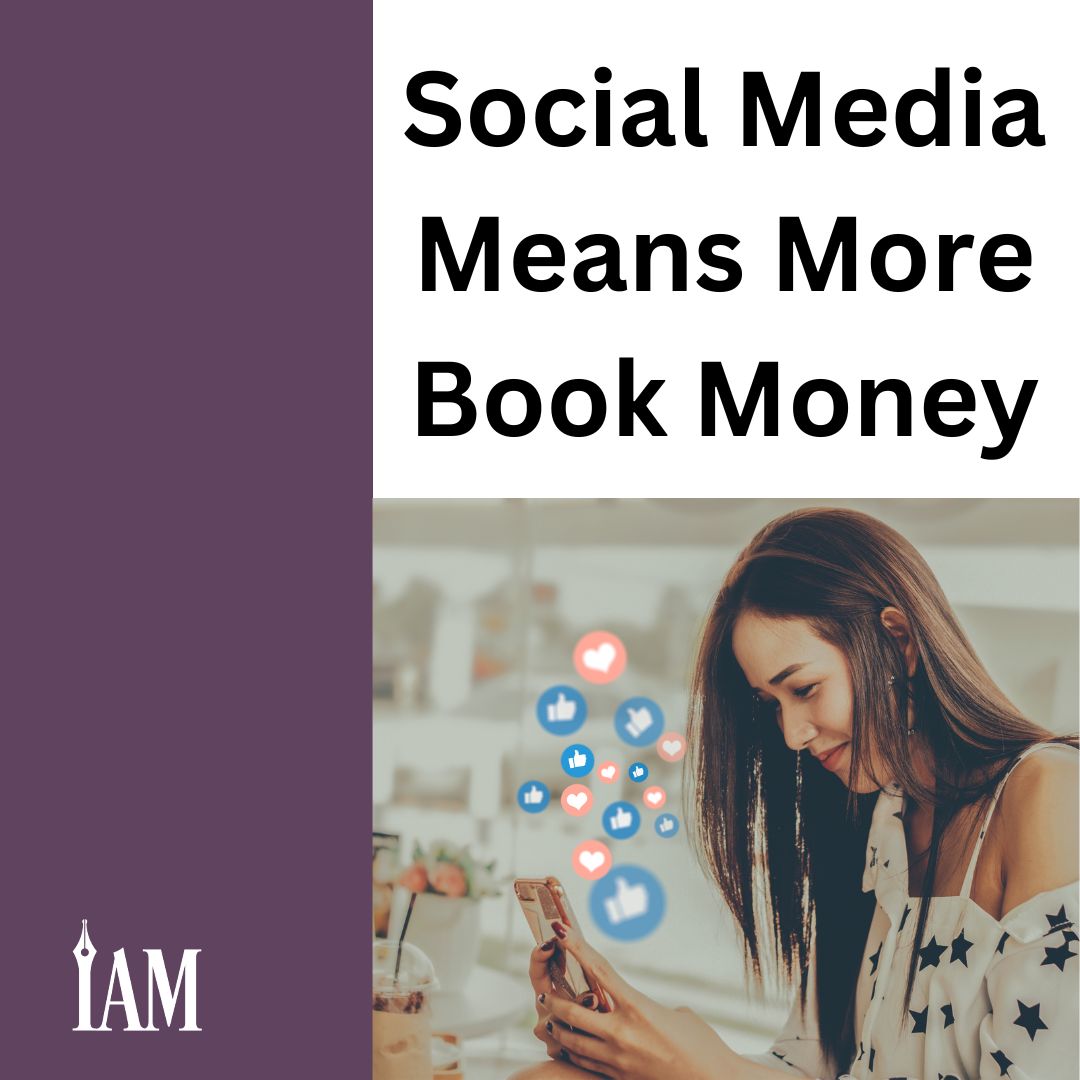
Steampunk Trends: Crafting Victorian Fantasy Success
Personally, I think Victorian fantasies are going to be the next big thing, as long as we can come up with a fitting collective term for Powers, Blaylock and myself. Something based on the appropriate technology of the era; like “steampunks,” perhaps.
—K. W. Jeter, in a 1987 letter to the science fiction magazine Locus
In Orange County, California, a trio of authors created a new and exciting sub-genre of Science Fiction during the late 1970s. It was a combination of an alternate history, where the Industrial Age steam engine grew to prominence, and a Victorian era aesthetic of exploration and invention. Beginning with Tim Powers’s Anubis Gates, K. W. Jeter’s Morlock Night, and James Blaylock’s Homunculus, and drawing from novels of the nineteenth century penned by H. G. Wells and Jules Verne, the trio created stories that tapped into the Victorian style of Science Fiction novels and reinvented them into something new. In time, “Steampunk,” as this sub-genre of Science Fiction and Alternate History grew to be named, would grow in popularity until it became mainstream in the 1990s. An explosion of novels, graphic novels, and comics came on the scene. Many motion pictures such as The League of Extraordinary Gentlemen, Mortal Engines, and Hugo followed, building on the popularity of the unique aesthetic created by this genre.
Elements of Steampunk
A Steampunk story contains elements that make it recognizable to readers. The plots are often based on a hero’s journey structure, but Mysteries and Thrillers in this setting can also be found. What ties them together is a style and aesthetic based on the customs and clothing style of Britain’s reign during Queen Victoria’s time, the United States Civil War period, and certain clothing elements from France’s belle èpoque. Gentlemen wear a range of headwear, from pilot or pith helmets to top hats, and the ladies wear shawls, caps, and, if adventurous, versions of the male top hats and pilot helmets. The uniforms and civilian wear are what you would expect from the Victorian era, with a few French corsets thrown in.
While the characters in Steampunk stories conform loosely to this era’s social customs, a modern viewpoint of women and people of color prevails. A woman is as apt to be a dirigible pilot as she is to be a wife or mother, and people of all races are accepted as full characters with agency in many stories. While a sense of British imperialism is part of the Steampunk style, it is often tempered by modern views toward colonization and its effects.
Other style elements include the wearing of goggles. Since airplanes are hydraulic, they do not exist in the mechanical Steampunk universe. Instead, travel is via steam engine trains, hot air balloons, or airships. Pilots wear goggles to protect their eyes while flying, and this element is often incorporated into the character garb. Another norm is the inclusion of mechanical items of both real and fanciful nature. Cogs and gears are the movers of the Steampunk universe and are found in most technology, including phonographs, clocks, and—yes—time machines.
Due to the influence of Jules Verne, one of the major symbols of the Steampunk genre is the octopus. Once a symbol of the railroad during this time period, it was also the featured monster in Verne’s Twenty Thousand Leagues Under The Sea. The battle with this sea creature is captured both in the movies and in the book and has left its mark in the minds of Steampunk readers.
Is Steampunk Dead?
After the genre’s rise in popularity in the 2000s and early 2010s, the Steampunk genre left the main stage, and other genres have become the fashion of the day. Yet Steampunk still has a strong following and stories continue to be written. The genre remains active and continues to flourish among readers and cosplayers alike, forming a smaller but even more vibrant niche.
Common Tropes
A story set in an alternate world with either real or imagined technology based on nineteenth century steam engine technology, airships, or mechanical machines
Class, LGTBQ, and economic struggles of the Victorian era
A hero’s journey plot featuring a global-bound nineteenth-century explorer on a mission of discovery
A heroine’s journey plot that focuses on female main characters throwing off social norms and finding agency as women in a patriarchy
An inventor that creates steam-powered technology of unusual properties and its aftermath
A Mystery or Thriller story set in an alternate nineteenth century
Empowerment of ordinary nineteenth century people in the face of industrialization

Paid Book Promotions Strategy for Indie Authors
Ad platforms like Facebook and Amazon may be a great option for making money as an author, but they’re far from the only ones. With the right strategy, paid promotions can lead to impressive sales as well.
If you’re not sure what I am talking about, paid promotion differs from advertising on platforms such as Facebook, BookBub, or Amazon in that you buy a slot on a subscription service going out to people interested in reading books. Your promotion will be shown once only on the day that you arrange it and will be sent directly to the subscriber’s email inbox.
Here is a short list of some of the paid promotion sites I use, though there are plenty more than what I’ve included here:
BookBub
Written Word Media (also known as Bargain Booksy or Freebooksy)
Fussy Librarian
Robin Reads
BookDoggy
BookGorilla
Book Cave
An example ad from Bargain Booksy.
The effectiveness of each is up for debate and can be affected by genre, price point, day of the week, and how often you run paid promotions. You can run a promotion for a single book, a series, or an audiobook, or you can even offer a free book or boxed set.
The price for these paid promotions varies enormously from one site to the next, but generally, the more you pay, the better the service is.
How much am I talking about? Well, for a BookBub Featured Deal—the gold standard, in my opinion—you will pay over $1,000 for a single ad in some genres. I have paid this many times, and it has always been worth it. The results vary, but typically the title being promoted will jump to number 1 in its genre and into the top thousand or higher in the whole store.
BookBub stands apart from the other services in that you have to apply and will probably be rejected. Don’t let this put you off; just apply again until you get one. Most other sites will take your money and run the ad, though they have limited slots, so your book will not get lost among thousands of others.
You don’t have to offer book 1 in a series. I often push a later book because it has a great cover or because the story stands alone. Boxed sets can also be good to promote for a multitude of reasons: readers will get several books into the series and find themselves more invested in your characters. You want them to read the rest of the books, right? You can get a stack of page reads if you are in Kindle Unlimited. Offering three, five, or more books will make you stand out from those offering just one.
Employing a great graphic can help your paid promotion stand out from the other books being advertised.
You can also stack promotions, making the most of your Kindle Countdown Deal days by running separate promotions each day. Amazon calculates rank over a rolling forty-eight-hour period, so you need more than a one-day spike to get that coveted number 1 spot.
I almost always stack three of four promotions to run on consecutive days.
Finally, having used paid promotions to grab a higher rank for your book, consider maximizing those gains with paid ads after the promotion. Once the title is number 1 in your genre, you can advertise that fact to grab those eyeballs on Facebook and other places.
I use paid promotions as part of my marketing strategy, and maybe you should too.

AI Controversy Sparks Author Backlash
To anyone who thought the discussions around AI might be quieting down, let this past month be an assurance: among authors, at least, the debate rages on.
On August 7, author and industry expert Jane Friedman wrote a blog post expressing frustration with Amazon and Goodreads after she discovered a series of nonfiction books, which she believed had been generated with AI, falsely published in her name. The article went viral, both for the concern that the same scam might be used to target other authors’ readership and for Amazon’s response to the situation. Though the books have since been taken down, initially, Friedman wrote that the company had closed her case because she did not have a trademark on her name.
On the same day, the creator of Prosecraft, an online database that provided statistical analysis of published works, took down the site after it received backlash from some in the publishing industry. Authors had raised concern the database created a “shadow library,” a collection that can make copyrighted or paywalled material more accessible to pirates or to be used for training AI.
Both headlines rekindled arguments about AI that started earlier this year, and we aren’t likely to see a resolution at any point soon, if the industry can reach one at all. Where some see AI as a threat to their ability to connect with new readers or protect their creations, others see it as an important aid in the publishing process. And neither group is wrong.
AI is a rapidly developing, powerful set of tools, and how people choose to use them will ultimately determine what they mean for creatives. Since our special issue on the topic, IAM has written several articles on AI tools and platforms. Even this month, one of our features highlights how AI can help with generating social media content—and its caveats. We write these articles not to convince you to use AI or to avoid it, but to explain it so you can consider the facts and your comfort level with the technology.
When it comes to AI, the industry will continue to debate. But the choice to use it will always be up to you.
Nicole Schroeder
Editor in Chief

Creative Incubation vs. Procrastination for Writers
For Creatives, Doing ‘Nothing’ Can Be Essential to the Process
Can you tell the difference between wasting time and giving an idea space to develop? Creativity coach and poet Mark McGuinness has a simple rule of thumb. “Procrastination happens before hard work,” he writes in his book Productivity for Creative People, and “incubation happens after hard work.”
Incubation means waiting for a story seed to grow into its creative potential, and it’s as essential as writing it. There’s a simple set of questions that can help you decide if the time you’re spending away from the keyboard is secretly part of your creative process.
Have you put in creative time?
Yes? Congratulations! It’s to the incubation station for you. Let your imaginative subconscious work while you have an excellent afternoon at the park with the kids, visit a museum, go to a concert, or swim a few laps. When you let go of controlling the creative process, the rest of your brain can get in on the act.
Are you stuck in procrastination purgatory?
Motivation is low, and avoidance is high. You’re probably looking for the quickest and easiest possible piece of “hard work” to feel you’ve done something worthwhile. Here’s how to release the pressure and find the exit fast:
What was the question? As precisely as you can, define the missing piece, the marketing problem, the character weakness, the plot knot, or whatever it is you’re missing.
Where is everything? Collect your raw materials: sketches, to-do lists, samples, drafts, emails, or texts to your friends or colleagues. Now you can see what you already have.
Can you shrink it? See if you have the skills, tools, and resources you need to complete the task you’ve been putting off. Shrink the scope to the minimum viable product, or the simplest and least stressful version of it you can do.
When is the best time? (Hint: Yesterday isn’t the answer.) Maybe you have to master a new technique or wait for a new technology to be created. A setback might mean it’s time to reset your deadline. Study your calendar for another window just the right size for this project.
Go to the incubation station. Do not pass Facebook or collect 200 spreadsheets. You’ve defined the problem, your timeline, and your approach—to the best of your conscious mind’s ability. You’ve done the hard part. At this stage, a nap in the hammock isn’t procrastination. It’s incubation time.
Your imagination needs time and space to do deep, creative work, and when we force a solution by re-working, we often get in our own way. Enjoy the hammock, guilt-free, then come back to your project.
Release the pressure cap. If you’ve been pushing for a long time, you may need a longer break. Kindness to yourself is the key to breaking out of procrastination purgatory. Allow yourself to rest, play, and fill up with life. Have some fun! Because sometimes the best creativity booster—and the best cure for procrastination—is joy.
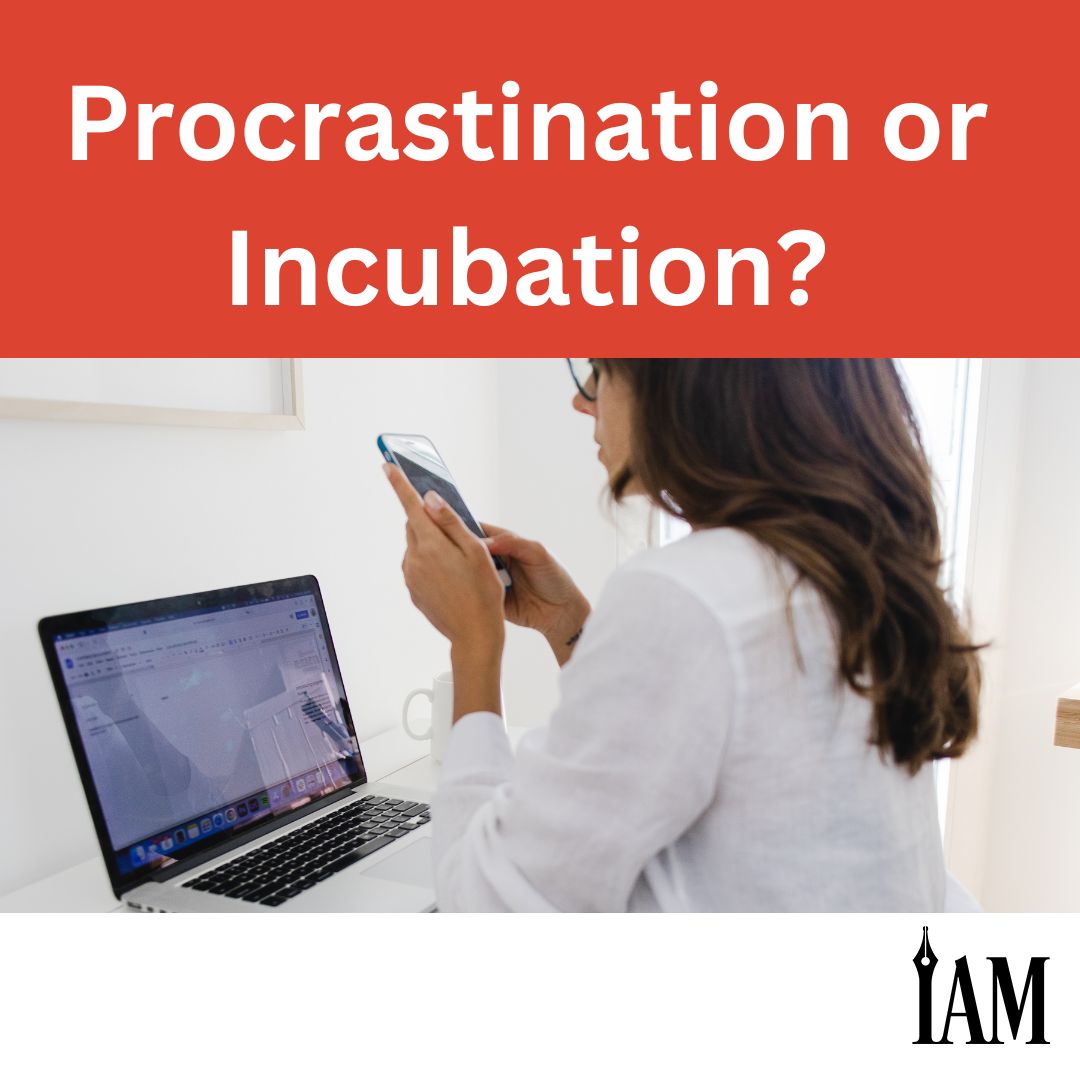
Canva Pro Tools for Indie Authors: Boost Your Visual Branding
Words may be most authors’ medium of choice, but that doesn’t mean we aren’t also testing our skills as visual artists from time to time. Whether it’s book covers or cover mock-ups, marketing material, giveaways, social media posts, or ads, authors—and indie authors especially—do a lot of graphic design.
It’s not a problem for those who enjoy hopping into Adobe Illustrator or are willing to pay for a designer. But if graphic design is not quite your passion, Canva (https://canva.com), the popular and affordable graphic design platform, offers a user-friendly interface and an array of tools to help create eye-catching artwork and images.
Since the program launched in 2013, Canva has continued to improve its platform, offering users enhanced features and functionality. Earlier this year, for Pro users, the company announced new features to expand the branding and collaboration capabilities of the program, as well as make it more efficient. For authors, the updates open the doors for even more creativity and cohesiveness across platforms and highlight new ways authors might be able to use Canva in their careers.
It’s time to dive in and discover how authors can make the most of these exciting new features.
Advanced Animation Features
Canva continues to build on the animation features of its video editing and creation interface, allowing users to bring their designs to life with simplistic animation. As audiences move toward short videos instead of static images on platforms like TikTok and Instagram, such tools are more useful than ever. Here are some ways users can incorporate Canva’s latest animation options into their designs:
Authors can create animated GIFs, videos, and interactive presentations directly within Canva to help their social media posts stand out.
Simple special effects, such as “fade,” “tumble,” or “pop,” can add emphasis to certain elements of a design or transition from one image to the next.
Canva’s layering feature allows for more detailed, dynamic creations.
Font animation can highlight key words or phrases or make a message stand out more against the rest of an image.
Smart Templates, Brand Kits, and AI Tools
Canva's new Smart Templates automatically adjust to fit your content, saving you time and effort in resizing and rearranging elements. The new Brand Kits integrated with simplistic AI features also enable users to create and maintain consistent branding across multiple designs, ensuring a cohesive and professional look.
Here’s a closer look at what that means for Canva users:
Customize and save templates that align with your brand guidelines.
Save time by creating multiple content opportunities with a single concept using the new Canva AI features.
Create consistent, professional, and visually appealing designs with Smart Templates.
Canva's mobile app has been significantly upgraded. The app’s Brand Kit feature has been expanded, allowing users to create and store their brand assets in one central location, including logos, brand fonts, images, and color schemes.
Canva now employs AI to provide users with design suggestions and inspirations tailored to their specific projects, including simplistic AI editing.
In Bulk Create, users can now upload CSV files to the platform to create multiple projects at once while utilizing personalized author brands, themes, and logos.
With “Brandfetch,” found in the Apps section, users can search for company logos in the Canva library and in their personal brand library to add to their designs.
The Color Wheel feature can aid in theme selection.
With the Color Palette Generator, users can upload a photo or image, and Canva will identify the prominent color scheme from the image to help create a cohesive theme within a design.
Better understand what impact your chosen color scheme has on your audience with Color Meaning; this feature explains the meaning of a given color or color palette.
Advanced Collaboration Tools
Canva now offers enhanced collaboration features, enabling real-time editing and seamless communication among team members. Explore the collaborative editing features, such as commenting, suggesting changes, and assigning tasks, to streamline the design review process and foster effective teamwork.
Multiple users can now work on a design simultaneously, making it ideal for collaborative projects.
Whiteboard interfacing now includes Canva’s content library, sticky notes, and special graphics.
Users will find unlimited whiteboard space; Canva currently has no limit on project size, so design projects may be as big or little as the work needs to be.
Collaborate with coauthors, clients, or other teammates by inviting them to edit design projects, calendars, documents, or schedules.
Canva now integrates with popular file sharing apps and platforms, like Dropbox, Google Drive, and Slack.
Content Planner and Publishing Tools
The new Content Planner allows users to publish social media posts directly within Canva. Seamlessly publish designs to various social media platforms, such as Instagram, Facebook, and X, formerly known as Twitter, and experiment with the following additional features:
Schedule bulk social media content using Canva's Content Planner. The scheduling interface can host multiple platforms, allowing authors to post on many social media outlets at once.
Experiment with different layouts, themes, and scheduling options to optimize your online presence and engage your audience effectively.
Content Planner offers holiday and special day templates authors can automatically personalize with their own themes and logos. It also offers inspirational templates every day under the Learn and Play feature.
Graphic Manipulation: Background Removal, Layering, and Typography
Canva has significantly expanded its stock content library, offering a wide range of high-quality images, illustrations, videos, and audio clips. Use relevant keywords and filters to narrow down your search. Along with more images, Canva now offers an expanded collection of custom fonts, allowing users to create unique and personalized designs.
In addition, users can now explore a number of new tools for design customization:
Advanced typography features, such as kerning, leading, and letter spacing adjustments, provide precise control over text elements.
Canva has partnered with Monotype and expanded its font library.
Users can now add special font effects, such as Font Outline, to the text in their designs.
Magic Edit merges a manual selection tool with AI-retrieved images and placement, utilizing Canva’s extensive stock photo library. Isolate the section of the image you wish to replace and then ask Canva’s AI editing software to find and replace the item you have indicated.
The Draw feature has been upgraded and streamlined with a brush tip controller, allowing for a finer editing tool and a transparency gauge.
The Magic Eraser helps fine-tune the removal of a background from an image. The brush tool allows for large or small strokes, depending on the area in which you are working.
The Layering tool can come in handy for editing different parts of a design without affecting the placement of images around it.
Pro Tip: Consider the mood, tone, and purpose of your design, and select fonts that complement your message effectively. Most genres are font specific, such as Cinzel and Cinzel Decorative for Urban Fantasy covers.
Canva continues to redefine the boundaries of design with its latest upgrades that are more beneficial than ever to the working indie author. The intuitive interface, advanced collaboration tools, animation effects, Brand Kit, Smart Templates, AI design suggestions, Content Planner, and mobile app enhancements offer authors a streamlined design experience.
Canva Pro subscriptions cost $14.99 monthly or $119.99 per year. For those who use the platform regularly as part of their marketing and social media strategy, these upgraded features can save valuable time and help you produce professional-looking posts easily—no graphic design experience required.
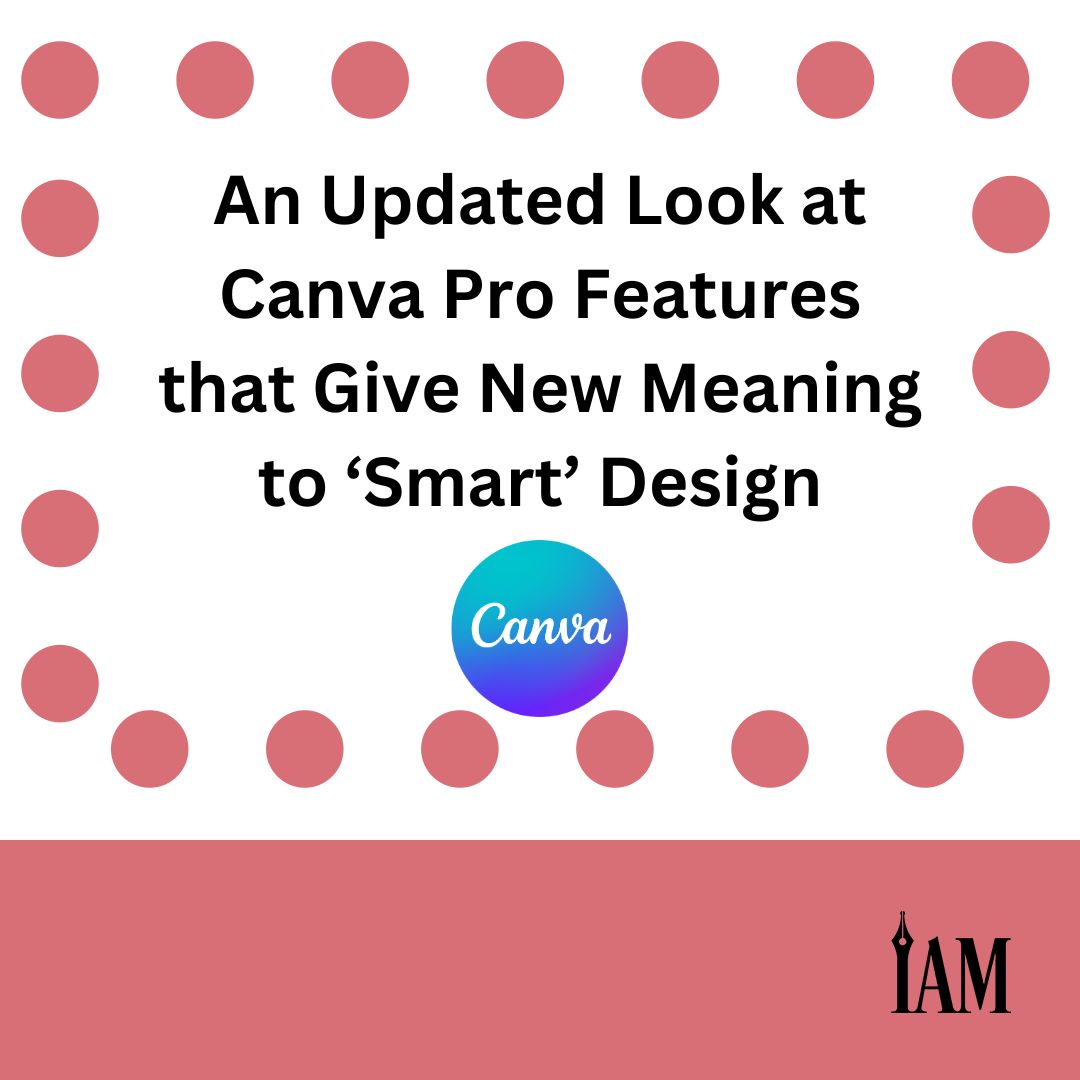
Using AI for Author Social Media Strategy
Can Authors Leverage Generative AI for Their Social Media Strategy?
Social media, in all its guises, is a fabulous way for authors to showcase their wares. We can promote our work and potentially attract a dedicated audience who will derive ongoing value from our writing and hopefully provide an income through future sales.
However, for some of us, it also feels like A MASSIVE TIME SUCK SENT FROM HELL TO DEMORALIZE US UNTIL THERE IS NOTHING LEFT. (Was I shouting? Apologies.) In more composed terms, it can feel like a burden. With an abundance of social media platforms available, many authors find themselves trapped in anonymity and often spend excessive amounts of time focused on marketing rather than their writing.
Authors have long searched for a way to create and post engaging content and write all the words—and with the help of modern AI-powered tools, there may finally be an answer. Some would say we’re about to dance with the devil himself. Strap in; we are going to the dark side, or the blessed relief, that is generative AI for social media.
Generative AI is a type of artificial intelligence that can take human inputs and create something new, like art, writing, video, or audio. Given a prompt, it generates its own creation with predictions based on its training data. Because it makes conveying ideas easier and faster, generative AI has the potential to be a transformative technology for productivity and creativity.
There is a division within the author community that questions the legitimacy of AI-generated content, particularly within the context of its training data. However, the concerns may be lessened when the AI is fed source material created largely by the author using it, or when exploring AI’s other uses as an efficiency tool, particularly in terms of social media.
Hubspot’s State of AI survey discovered that social media posts are the top content type for generative AI in 2023. Other findings include:
67 percent of marketers say the biggest benefit of AI is the ability to create content faster.
35 percent of surveyed marketers report using AI to get ideas or inspiration.
13 percent of marketers report using AI for repurposing content, enabling them to get more traction content-wise.
48 percent of marketers say the biggest benefit of AI is the ability to generate new ideas.
What does this mean in author speak?
Imagine feeding your synopsis into a generative AI platform and it delivering your blurb, tagline, and social media content in response. It’s a nice thought, but are these creations truly worth using? In the name of journalism, this author has done exactly that to find out.
The Experiment
As a time-poor, often technologically challenged author with a mediocre social media game, I wanted to know if AI would deliver an engaging suite of content that was both user- and engagement-friendly.
I used ChatGPT for the experiment, beginning with asking the bot to tell me about one of my own books with only the title and author as prompts. ChatGPT produced a couple of paragraphs about my book—that were completely off-target and off-genre. After a one-sided conversation in which I questioned the intelligence of this artificial being, it occurred to me that the problem was … me. I had not been targeting the market I wanted to target. Apologies were made.
The next step was gathering all the reviews for said book, feeding them into ChatGPT and asking the program for common themes. Et voila, ideas for social media content, and for rewording my blurb.
I then fed the program my new blurb and a bunch of pithy, one- and sometimes two-line phrases that had resonated with readers, such as “gripping page-turner” and “emotional rollercoaster.” Plot points and character arcs mentioned in reviews also helped determine promotional and content opportunities. Because I performed these two activities back to back, the program used all the data to collate its response.
AI mimics humans, but it isn’t human. I needed to edit ChatGPT’s content until it fit my voice and targets. But was it better than staring at a blank page and muttering profanities? In a word, yes. Instead of the hours or days of manual research, and trying to use my brain after said manual research, the process took about an hour. I should add that I didn’t have hundreds of reviews to feed into the program. Even so, copying and pasting is so much faster than manually collating themes and ideas.
Generative AI offers benefits beyond content creation, such as scheduling and posting content, analyzing audience analytics, and creating unique visuals. It can also help with a more strategic focus, such as analyzing research by taking pages of your own and competitors’ reviews and summarizing the information into key takeaways and an overarching statement. Taking a sample of a genre-relative bestselling author’s reviews and getting ChatGPT to tell you what readers most like about their work can give invaluable insight into what has made that author a bestseller.
When it comes to creating social media content, break through writer’s block by asking for a transition line from the last statement you wrote. Another option is translating text and adjusting it to sound more natural in a targeted language. While it’s not a complete replacement for localization and cultural adaptation across global communities, generative AI can certainly accelerate that process.
The Caveats
Generative AI does not provide you with backlinking and sourcing in the content it produces, and some have expressed concern that, by ignoring the original content’s creators, there is a risk of plagiarism. However, if the program you use creates content derived from your own material, that problem may be resolved.
As previously mentioned, human editors are still needed to review AI-generated content before publication, even on social media. It also doesn’t hurt to get a second set of eyes on the content if you’re unsure. As for content bias, if the outcome is not hitting the mark and the source material is your own, perhaps your original attempts at content were off target (refer to this writer’s experiment).
Rapid technological advancements mean that regulatory frameworks and ethical guidelines still have to catch up. It’s a case of watching this space when it comes to legal and ethical implications. For now, it seems the biggest issue standing in the way of generative AI for social media is possibly our own concerns about authenticity. But as Mark Twain once said, there is no such thing as an original thought. And with the firm consensus that you need to put your personal brand on anything you intend to post, authenticity is built into the process.
The Tools
So if AI interests you, what tools should you be using? Ask that question out loud next to your smartphone and your Facebook feed will likely provide you with a plethora of options. Alternatively, check out this list of some of the more popular generative AI platforms.
Publer helps create, bulk schedule, and analyze social media posts.
Jasper.ai, ChatGPT, and Peppertype.ai help you brainstorm and generate AI-powered content.
Murf AI is an AI voice generator for creating audio content for your posts.
Frase helps research, write, and optimize content.
Ocoya allows you to create content, images, and music from a single platform.
GrowthBar not only helps you create compelling content for social media; it also helps you to understand your competitors’ strategies. You can review their keywords, Google Ads, and backlinks to get a better understanding of how to outrank them.
Munch extracts the most engaging contextual nuggets from your long-form content and presents you with coherent, shareable clips.
Writesonic creates any type of creative copy. This tool can help you create SEO-optimized content for your blogs, ads, emails, and website.
Copy.ai can help you write long-form content and social media messages optimized for different platforms. If you’re creating social copy, Copy.ai will generate multiple options for you to use.
Midjourney uses AI to identify keywords and phrases and generates an image that reflects those keywords. This approach makes it much easier to create visuals that capture the essence of your message.
Many of these programs offer free trials, and it’s a good idea to ensure you have the time to invest in experimenting during the free phase in order to generate enough data and decide whether to invest in the tool down the road.
Generative AI’s potential uses in content development, ideation, and content adaptation for social media make it a uniquely powerful tool for any author. Depending on how you choose to use it, it can be a remarkable time-saving solution and a worthwhile investment for many. With the power of AI, a well-crafted prompt is all it takes to develop a more targeted social media strategy and save you time that can be redirected back to writing.
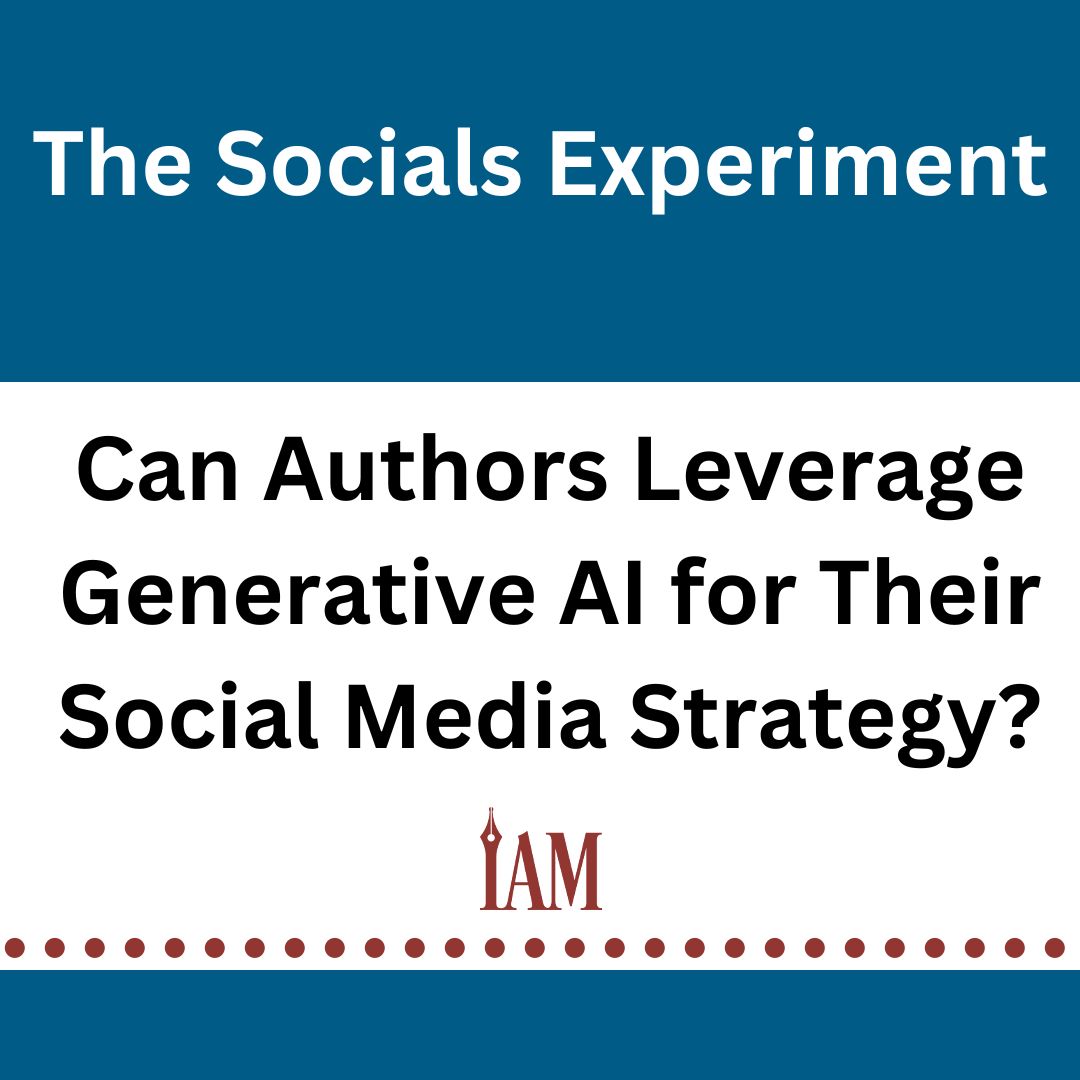
October Insights for Indie Author Success
Why did you pursue independent publishing?
We could surely all answer differently. In my case, I knew traditional publishing could be a long and taxing process. I knew the book I wanted to write was in a niche genre and therefore would be harder to sell to an agent, even if I also knew it would have plenty of readership. I had a friend who had self-published already, and she was willing to answer my questions and lead me through decisions I needed to make.
It was only as I ventured further into the world of self-publishing that I realized how many opportunities it offered. I once viewed indie publishing as a “backup option” for putting my book into the world, but our industry is constantly growing and evolving as we adapt to new programs, platforms, and ways to connect with readers. It has been that way since I dipped my toe into these waters in 2021.
And it’s only going to get better.
We partnered with Writer MBA for this special issue of IAM to showcase that future and all its many possibilities. One of our articles this month describes independent publishing as an open ocean in front of us, and it’s such a great metaphor for the future of this industry and where it may take you. Come to think of it, it’s a metaphor we use a lot—from the 20BooksTo50K® mantra, “A rising tide lifts all boats,” to the author who laments their exhaustion while trying to keep afloat in this month’s letter to Indie Annie.
But even the best seafarers rely on maps, tools, and guides to get their heading. In these pages, we offer you just that: introductions to some of the most influential voices in the indie publishing world, resources for automating corners of your business or identifying your ideal marketing strategies. Whether you decide to just tip your toe in or are charting a course for distant waters, we hope they can spark your excitement for what’s out there.
After all, there’s an entire ocean for us to explore.
Nicole Schroeder
Editor in Chief
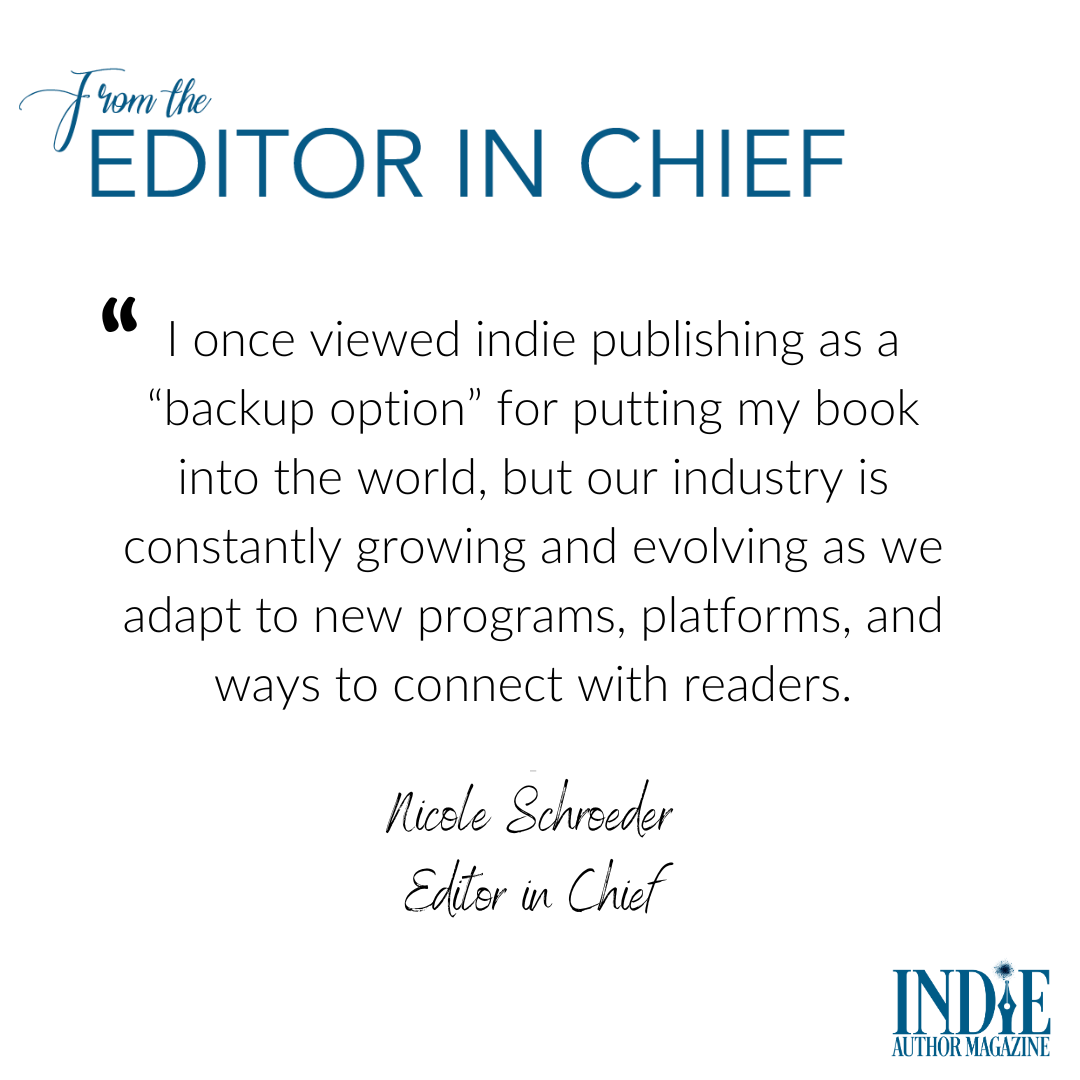
💡
The Rest of This Issue is for Paid Subscribers Only
Get more than just tips—get real results. As a paid subscriber, you'll unlock the full-color issue, VIP access to webinars and training, discounts on software and tools, and a community to support your journey.
Get more than just tips—get real results. As a paid subscriber, you'll unlock the full-color issue, VIP access to webinars and training, discounts on software and tools, and a community to support your journey.

